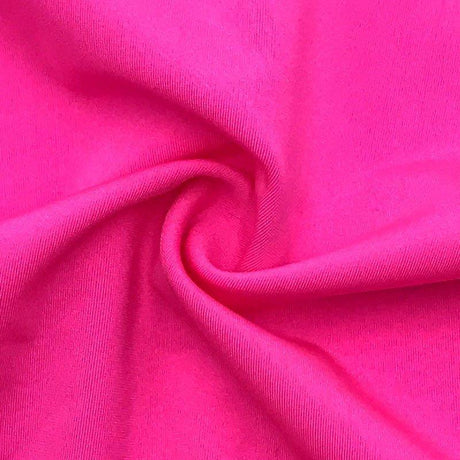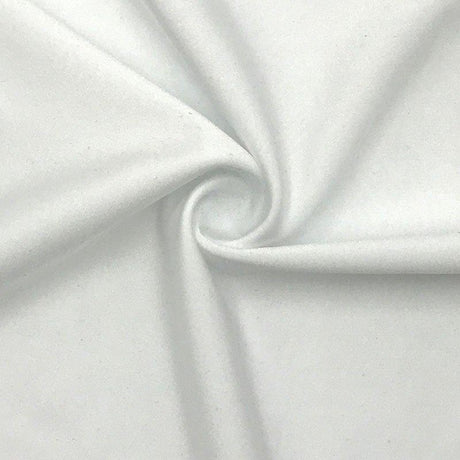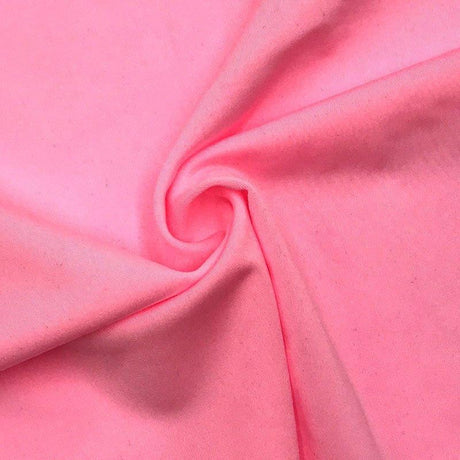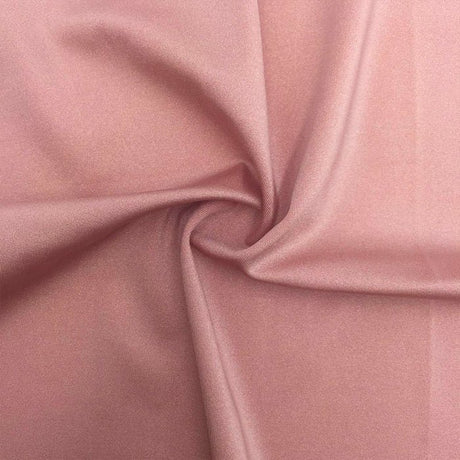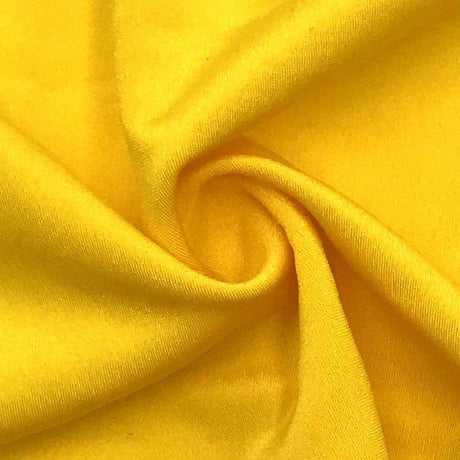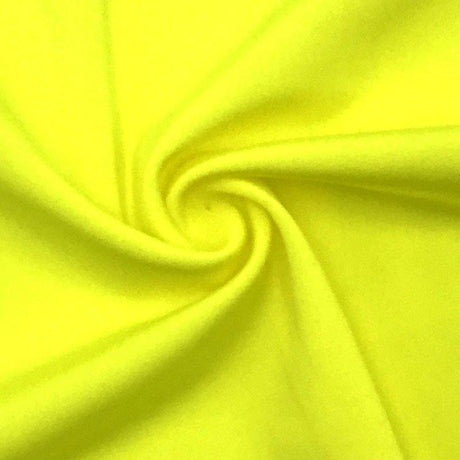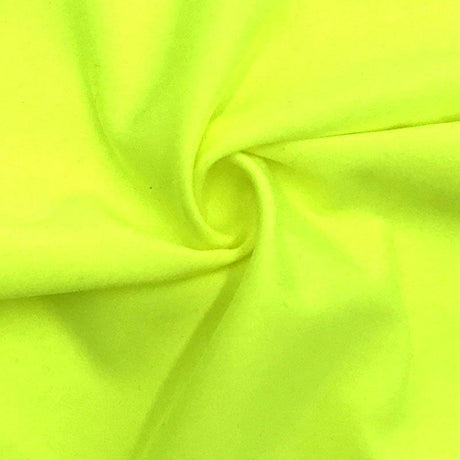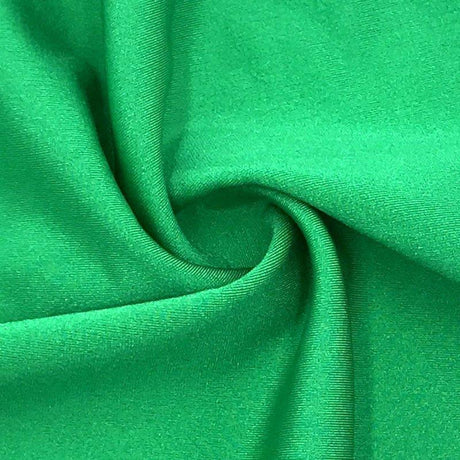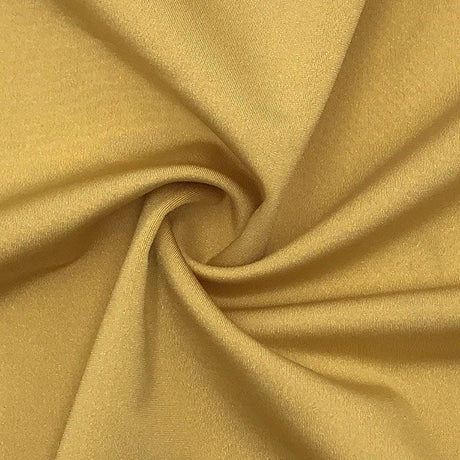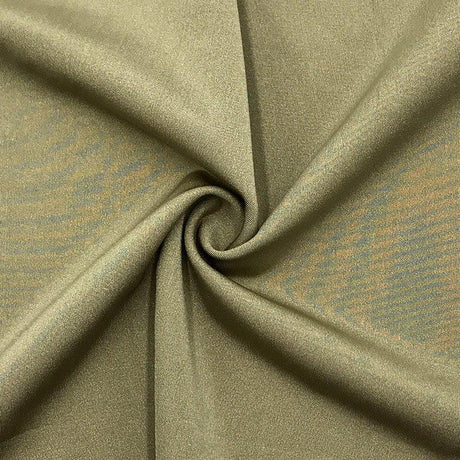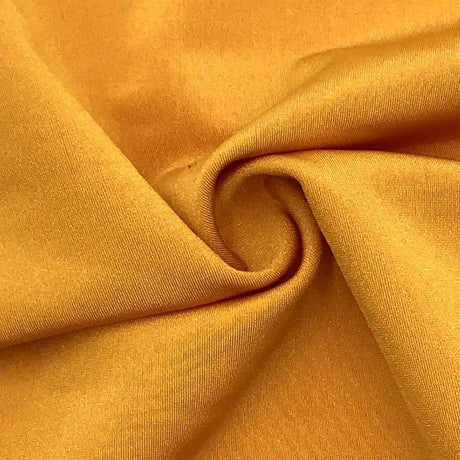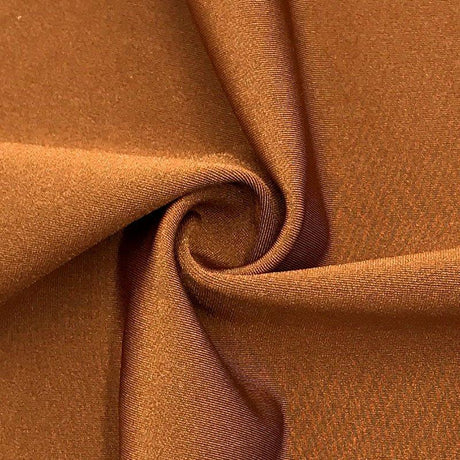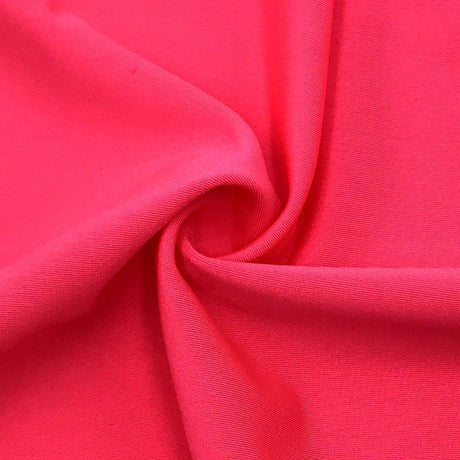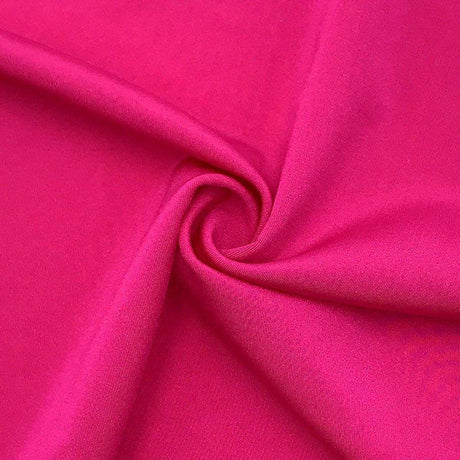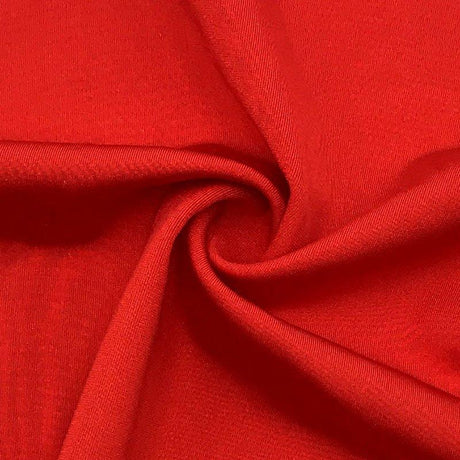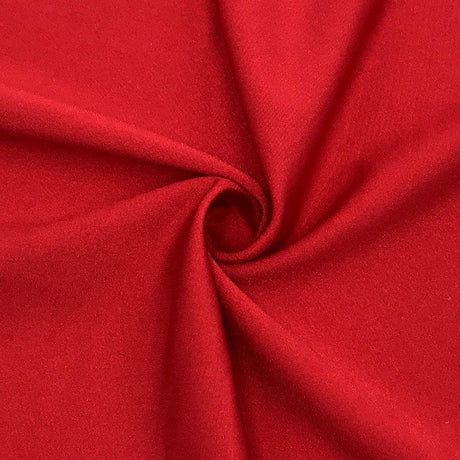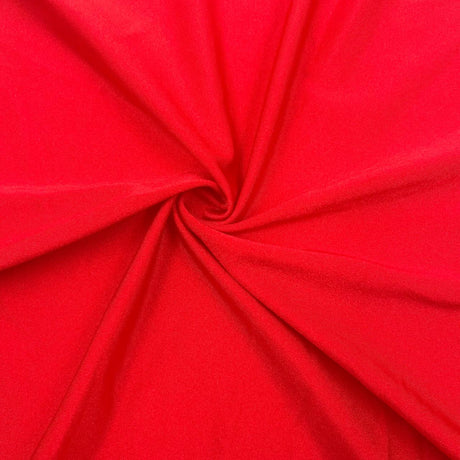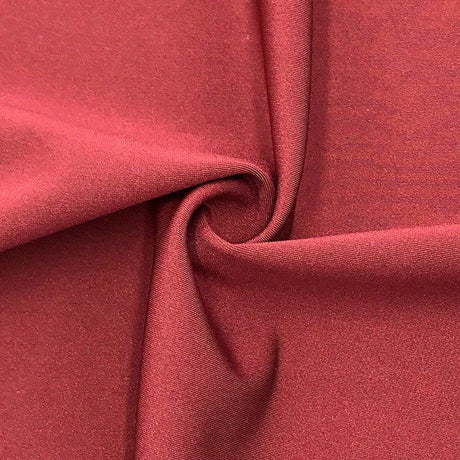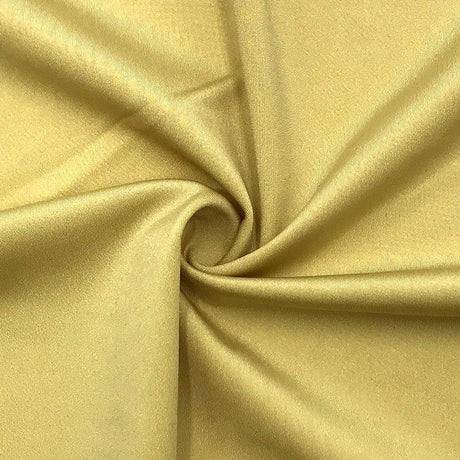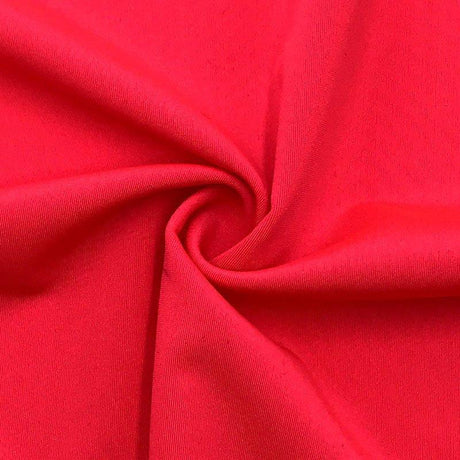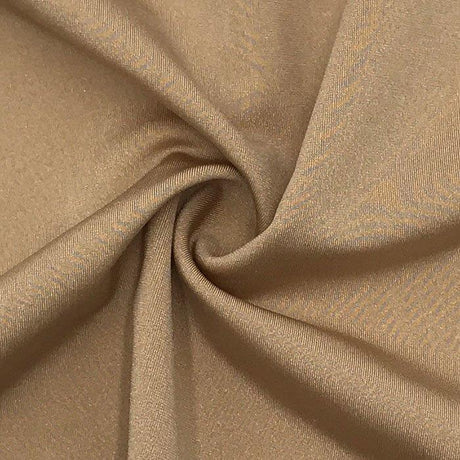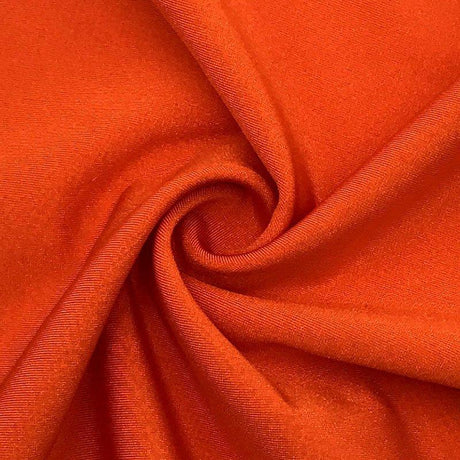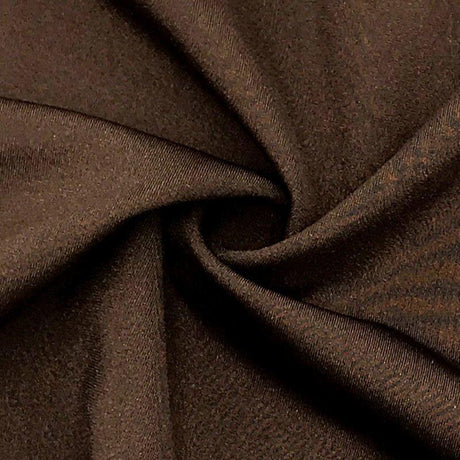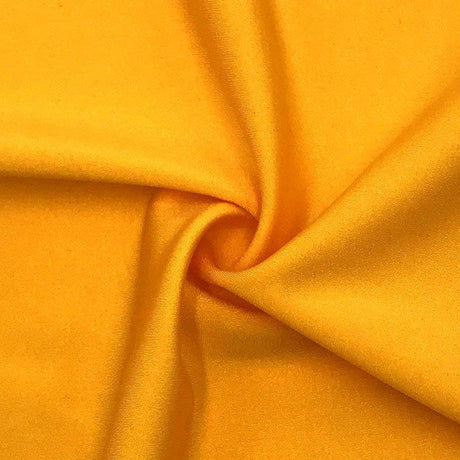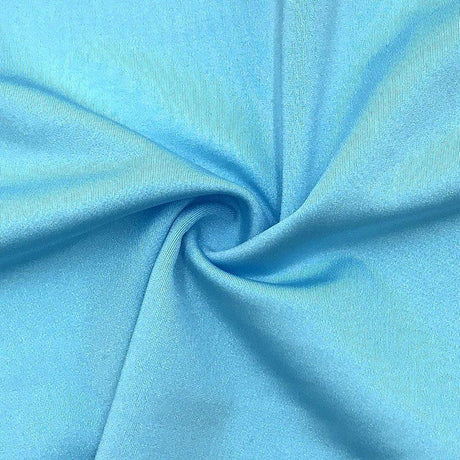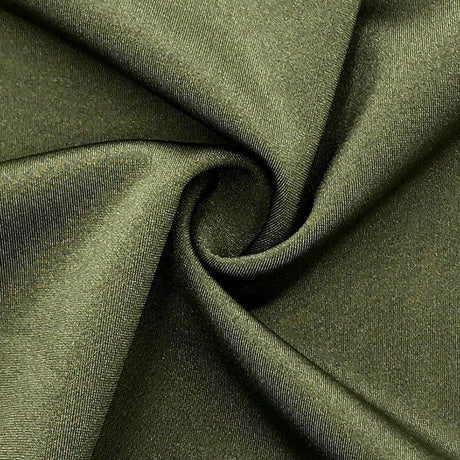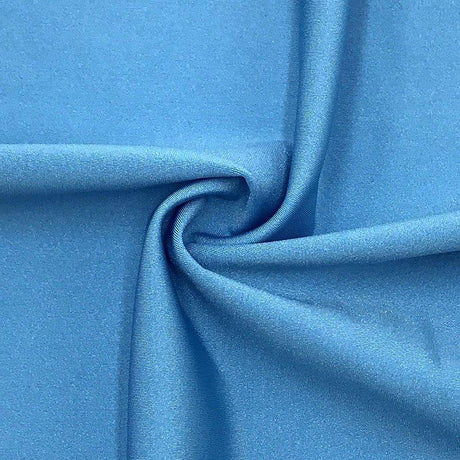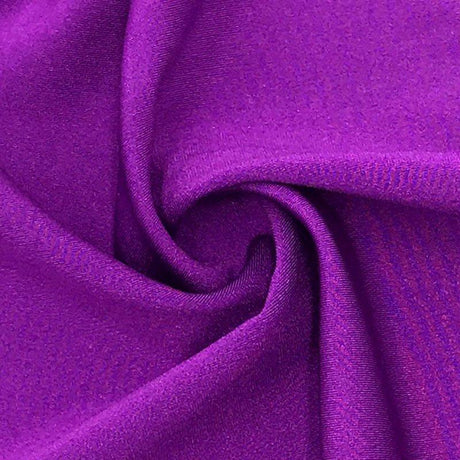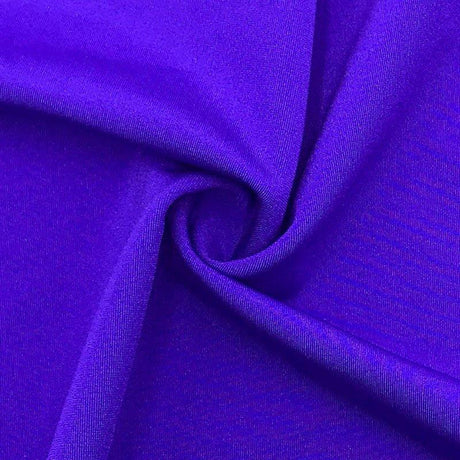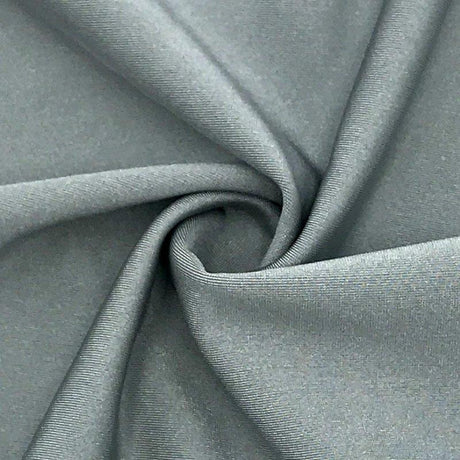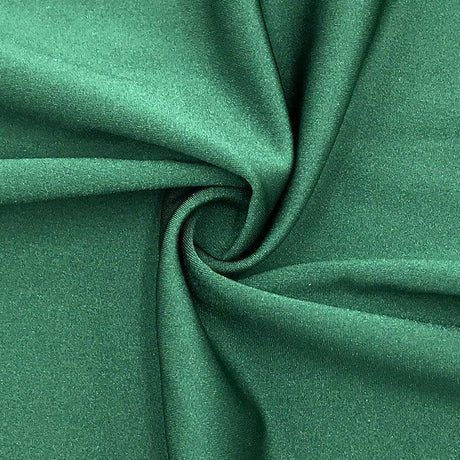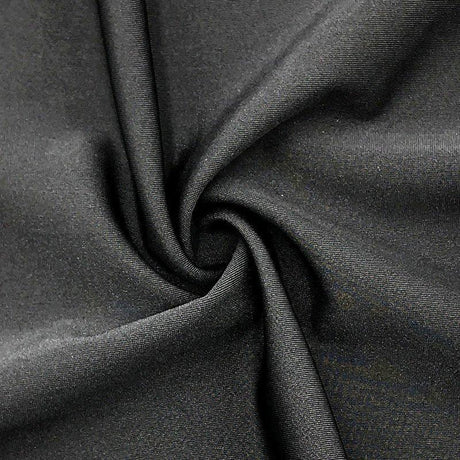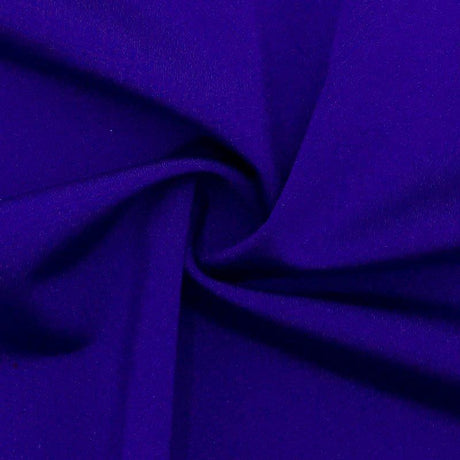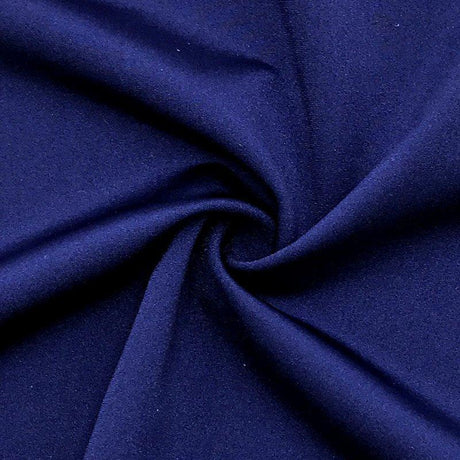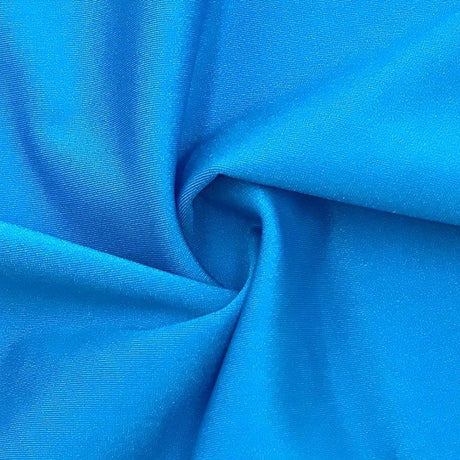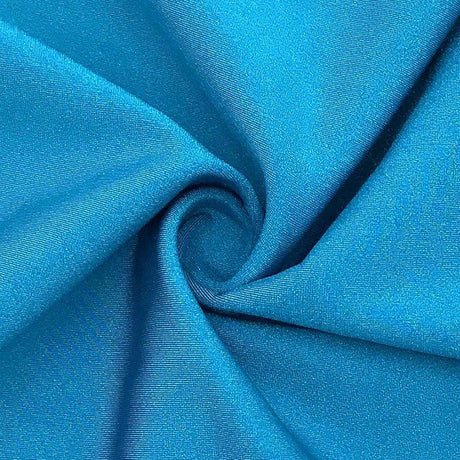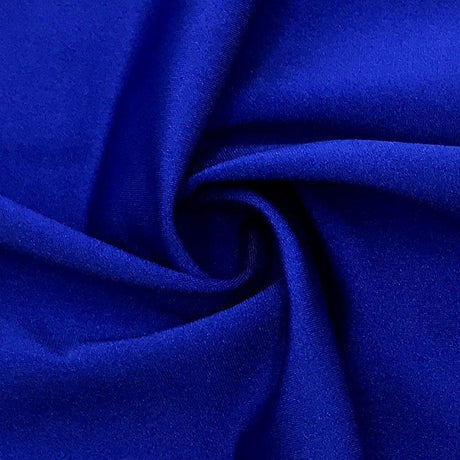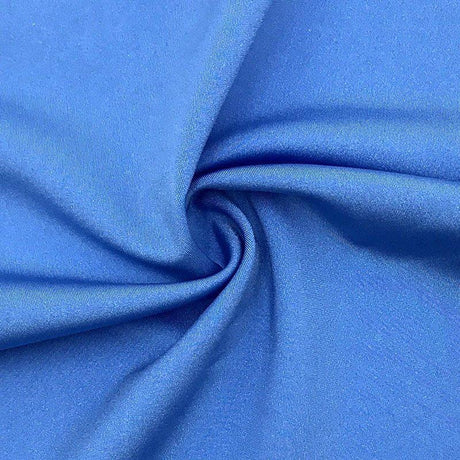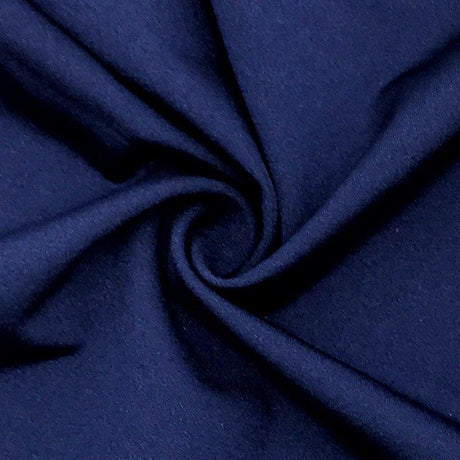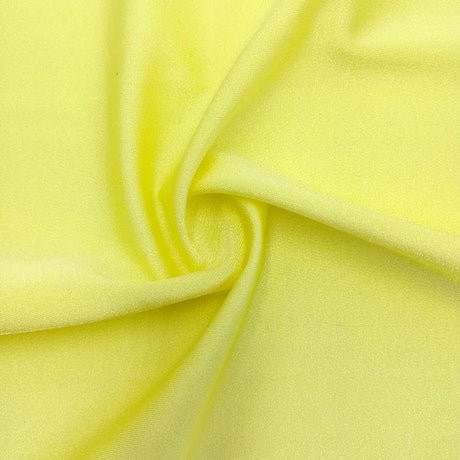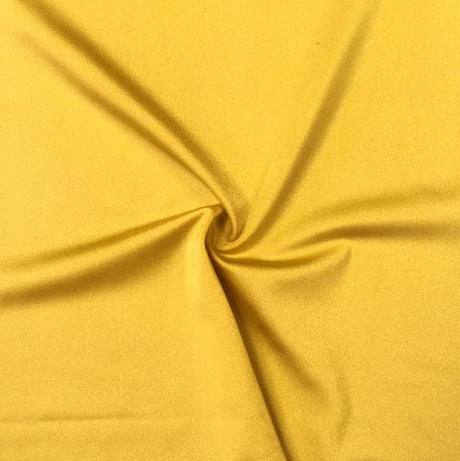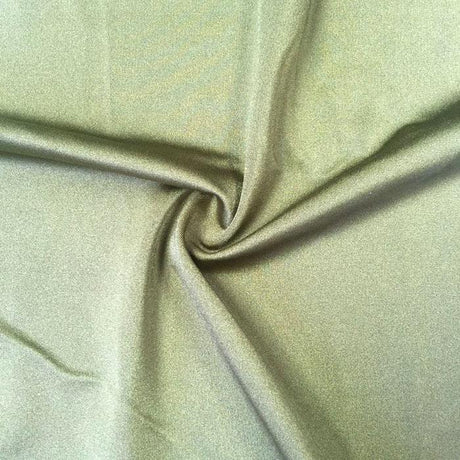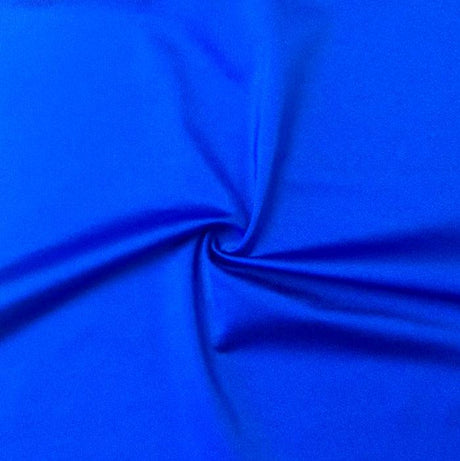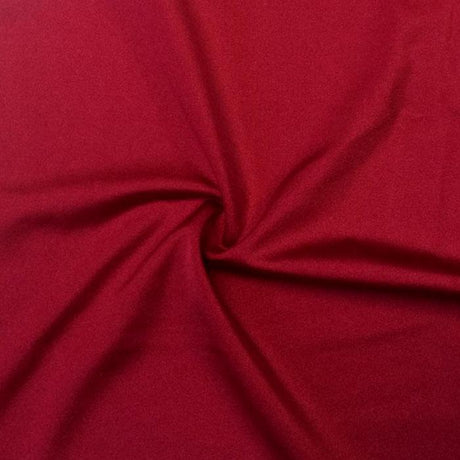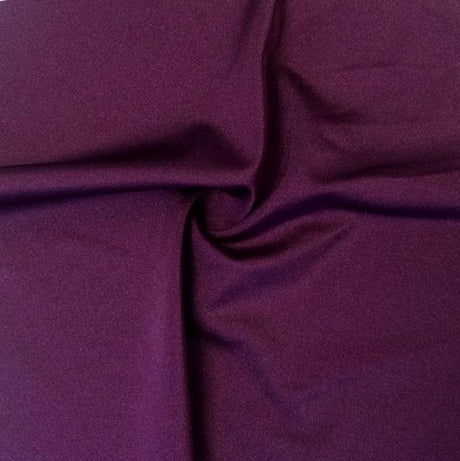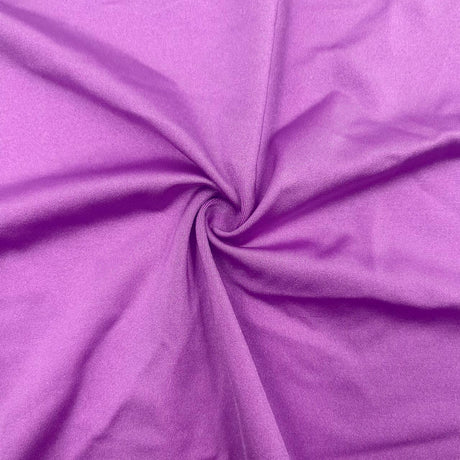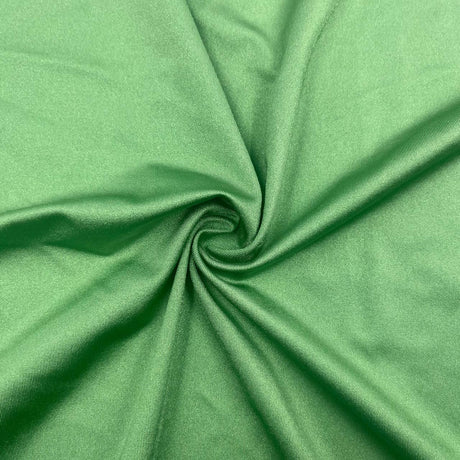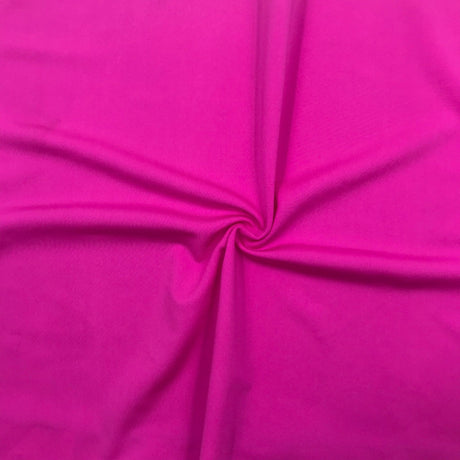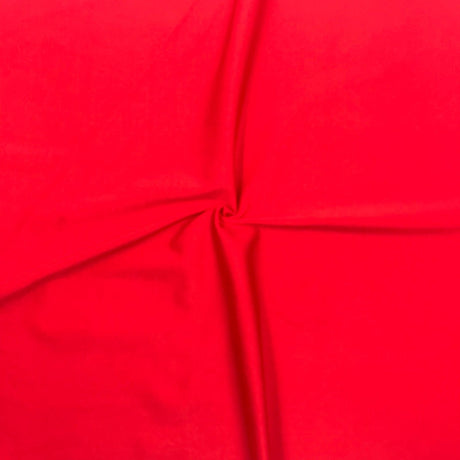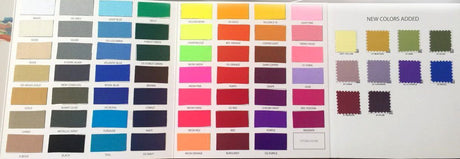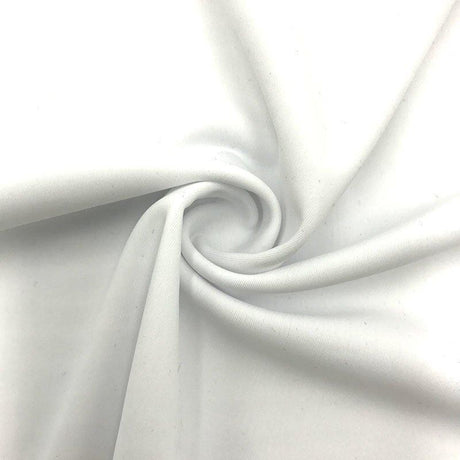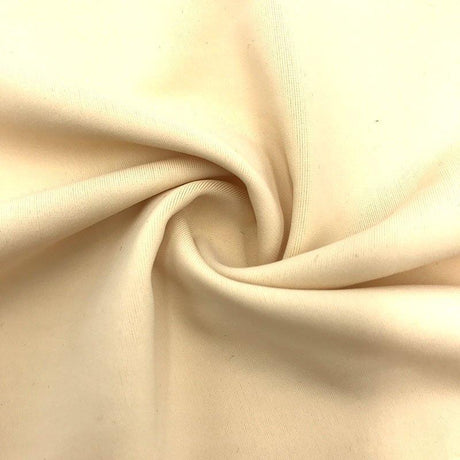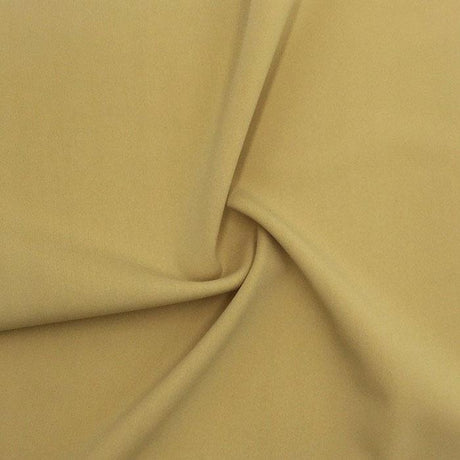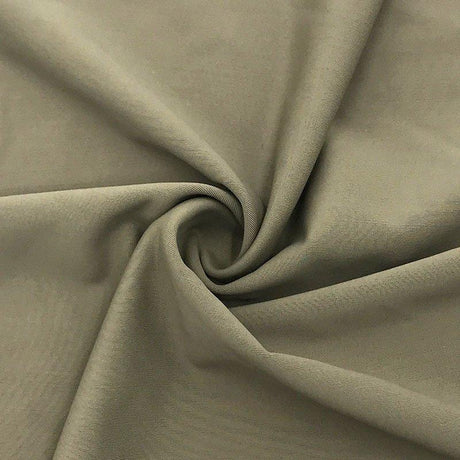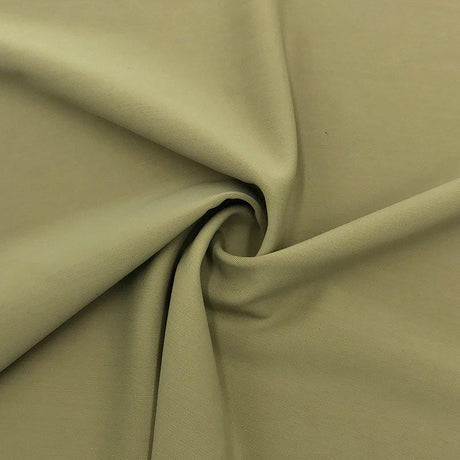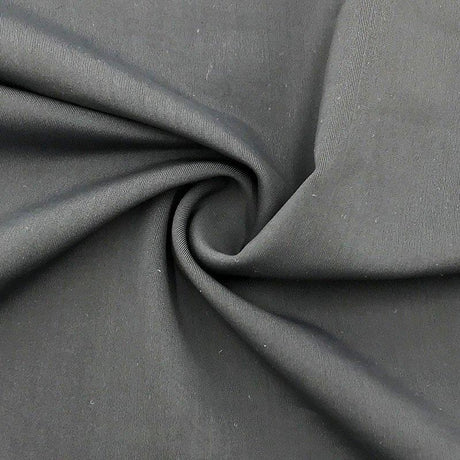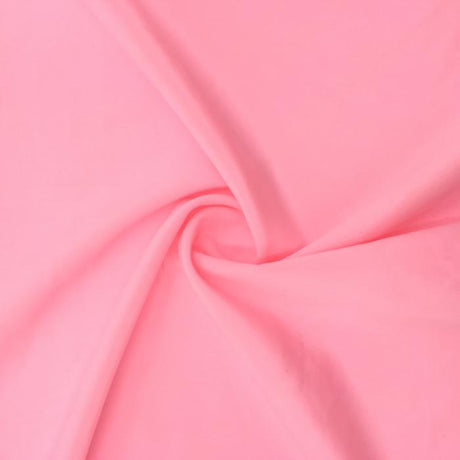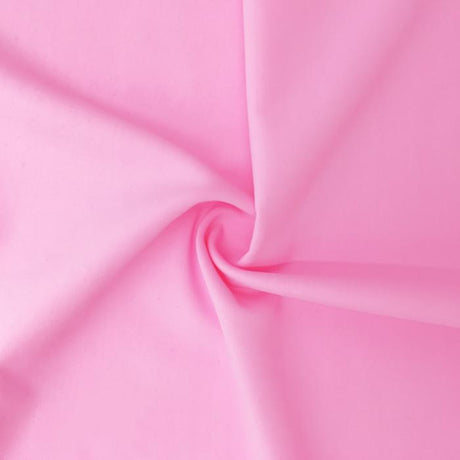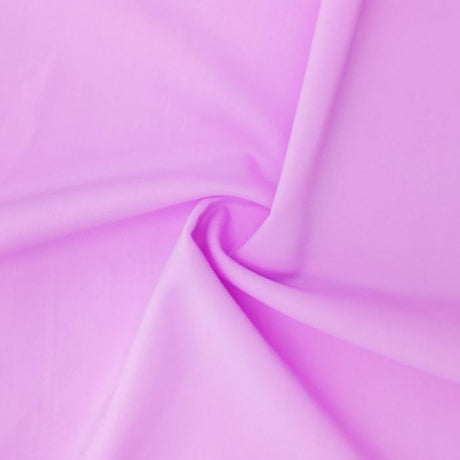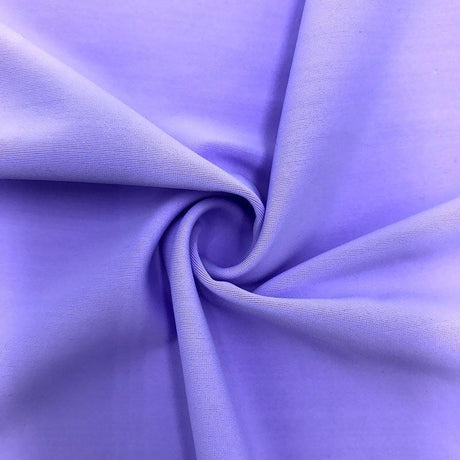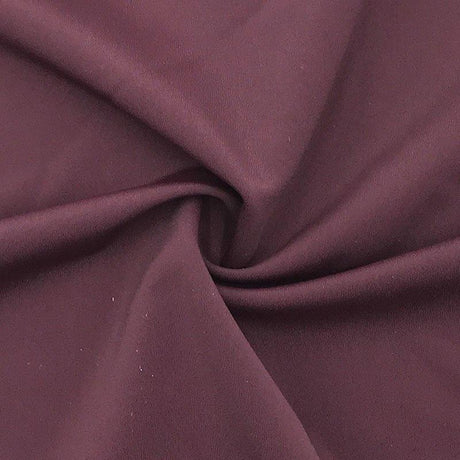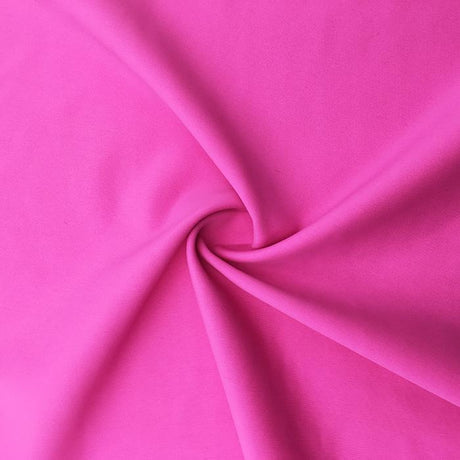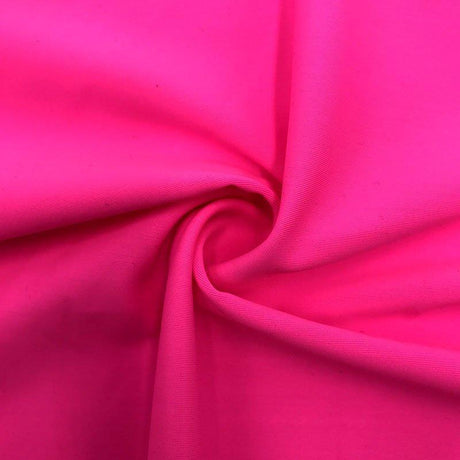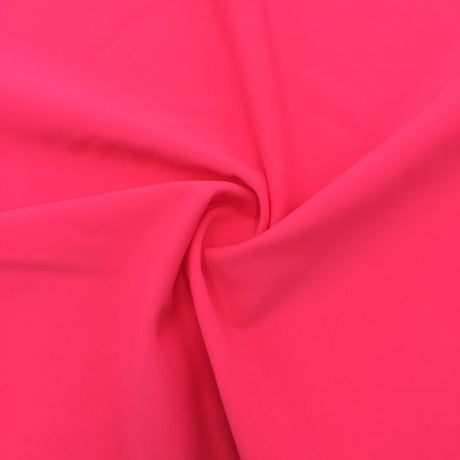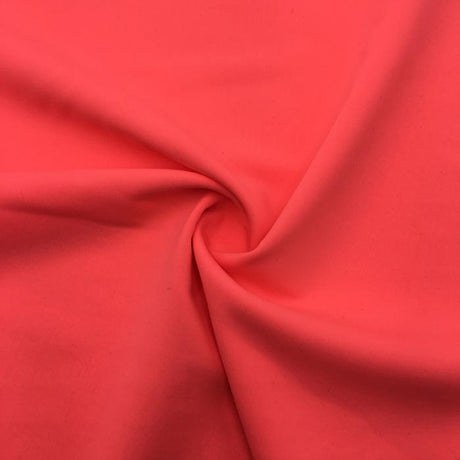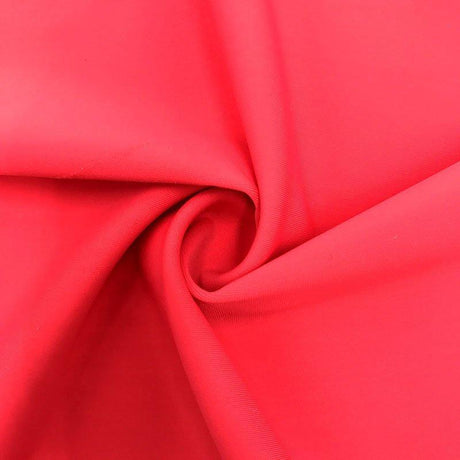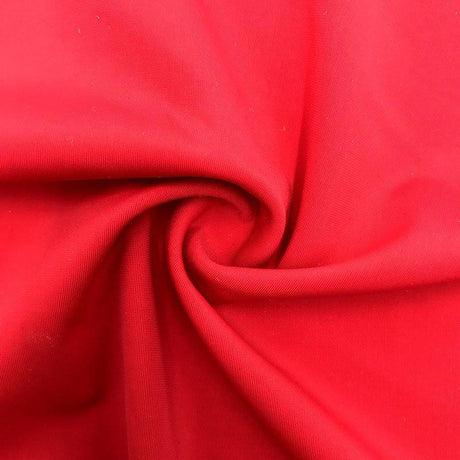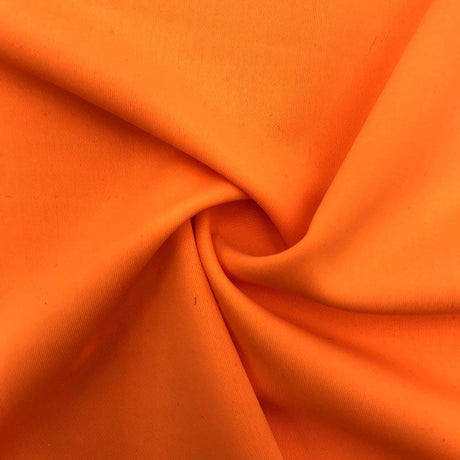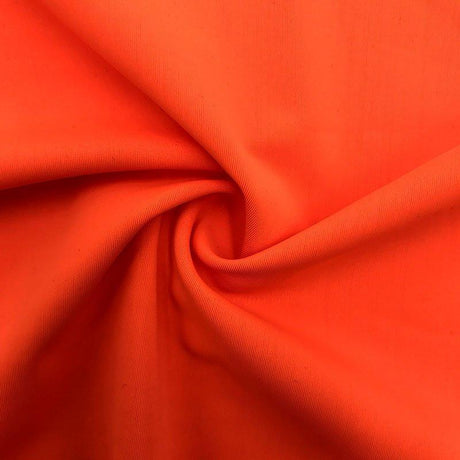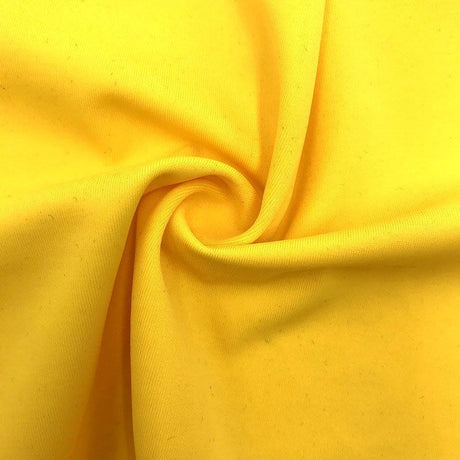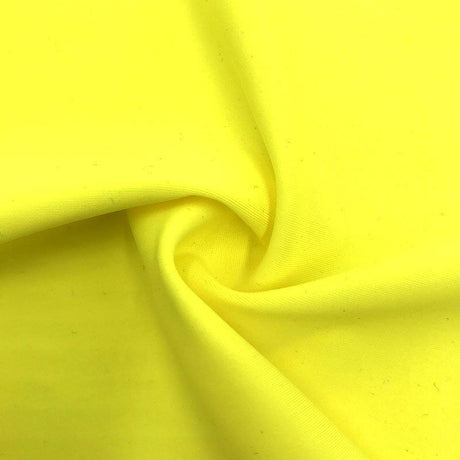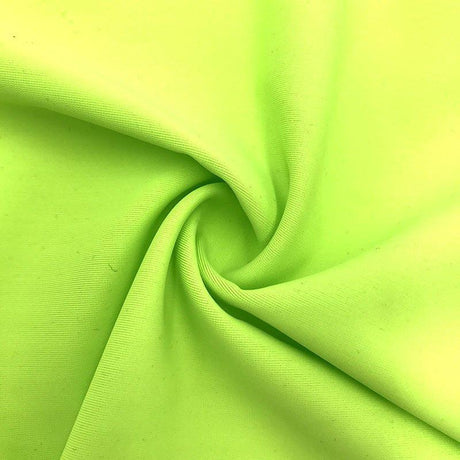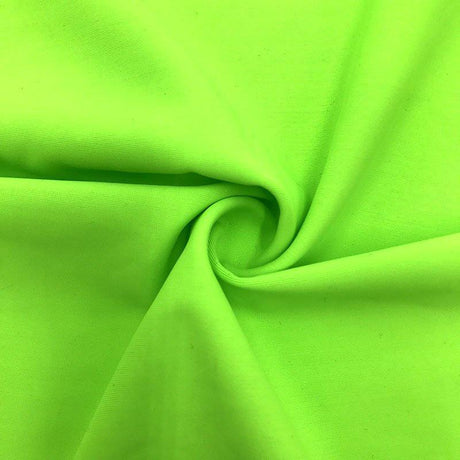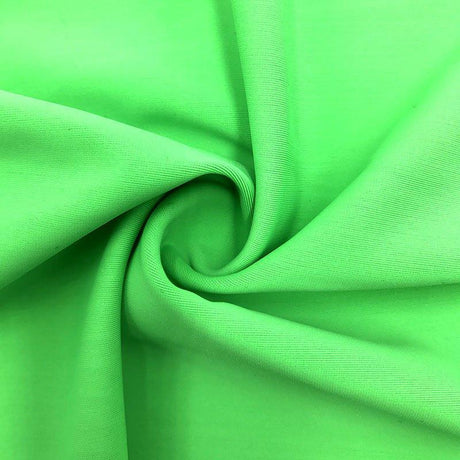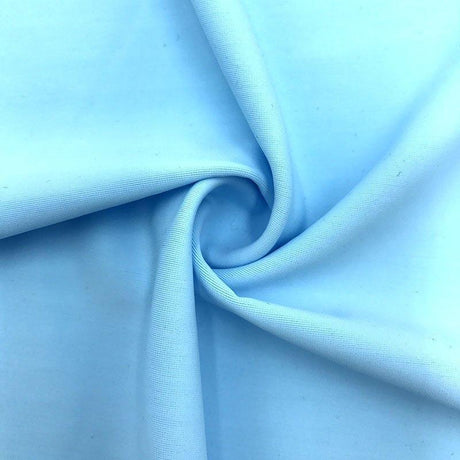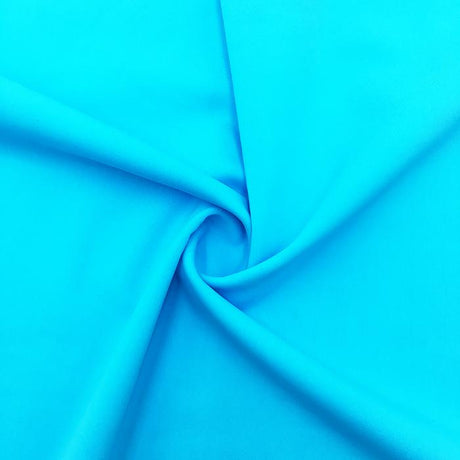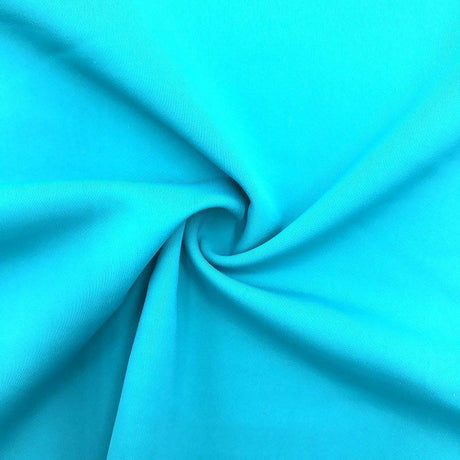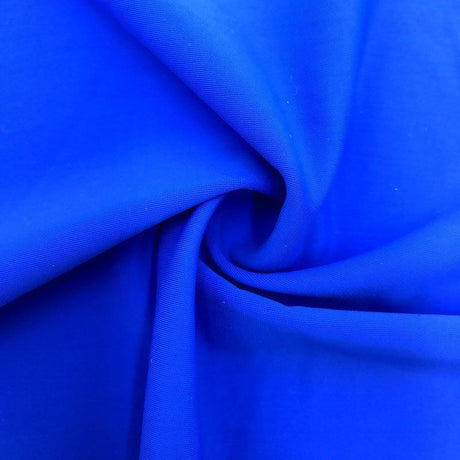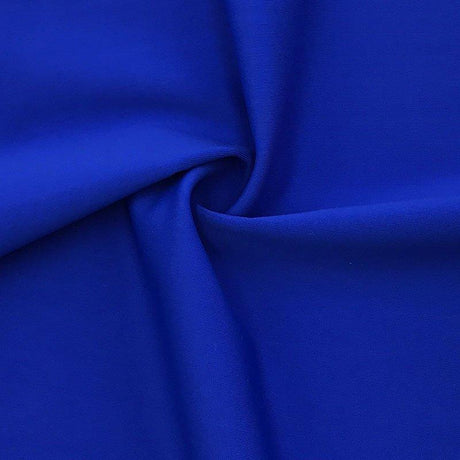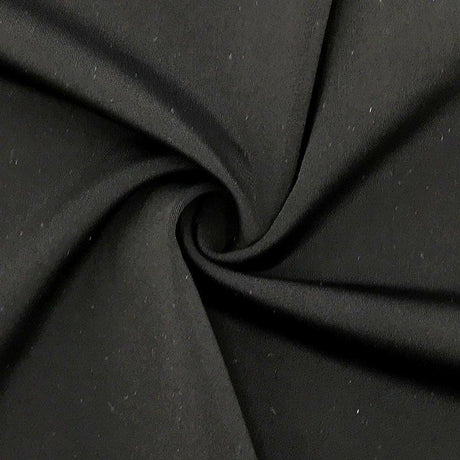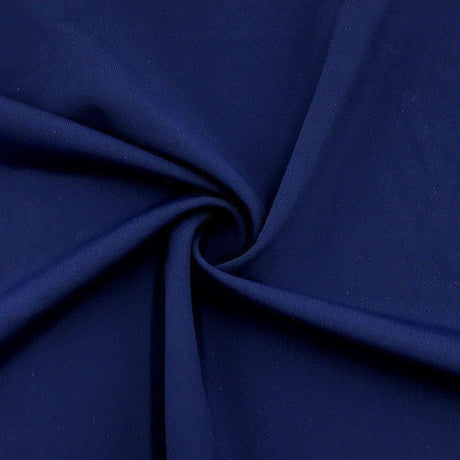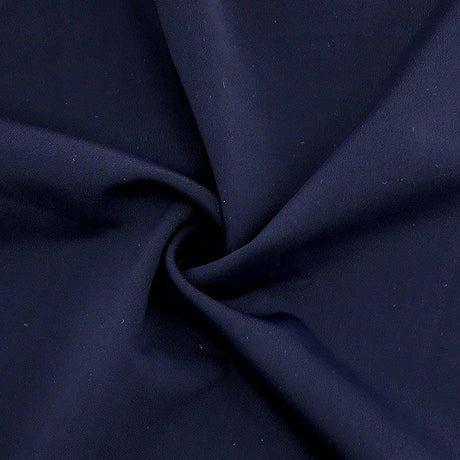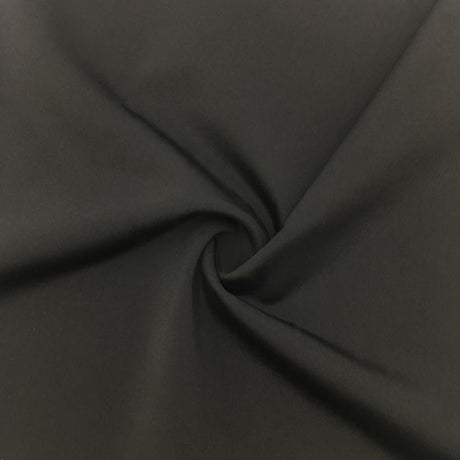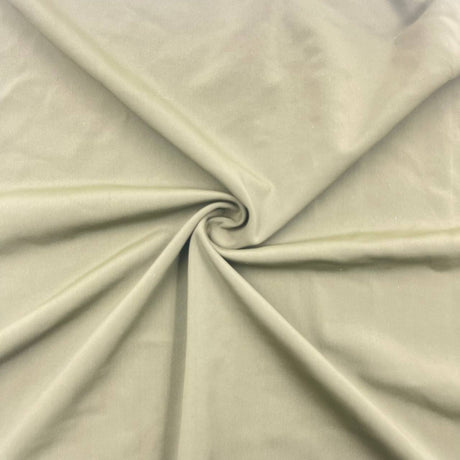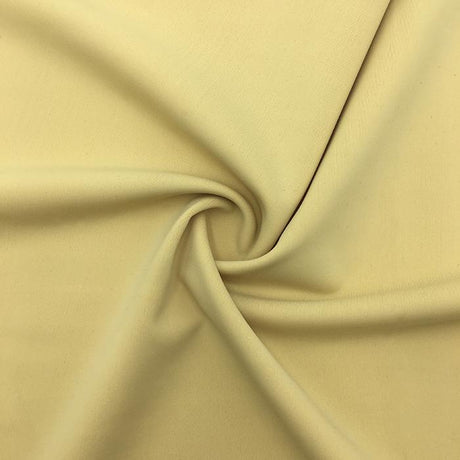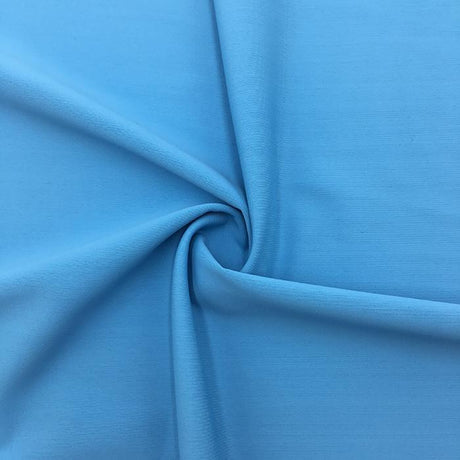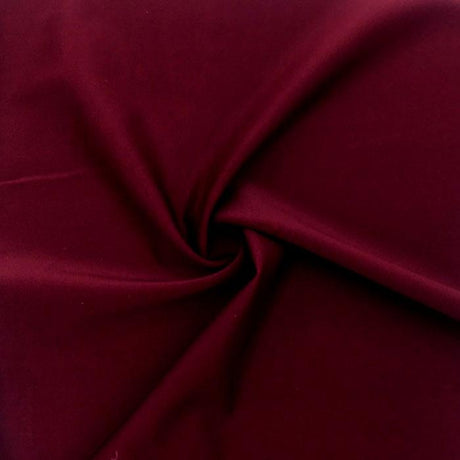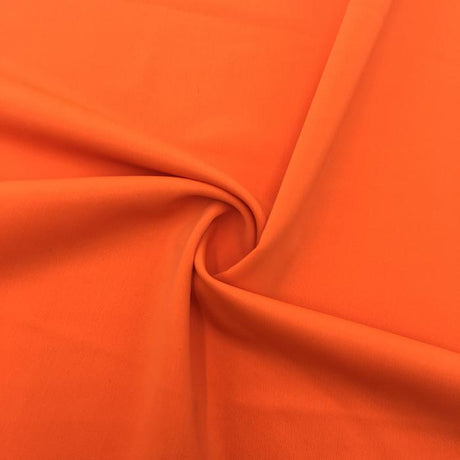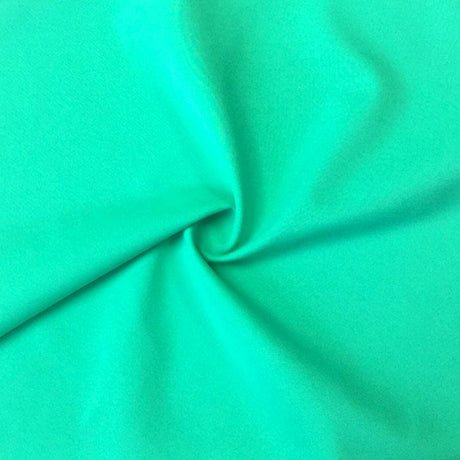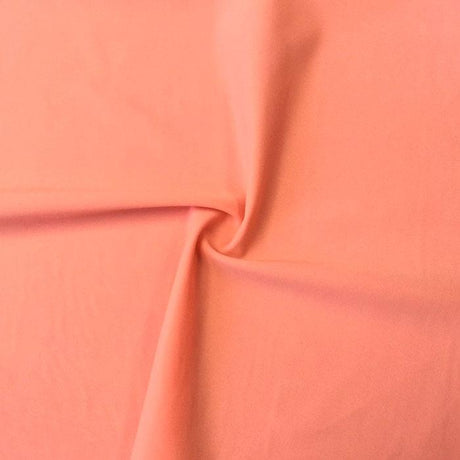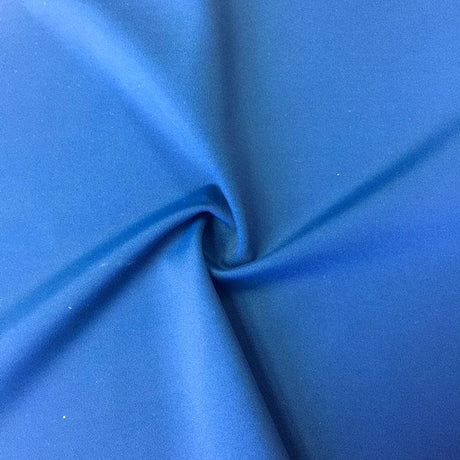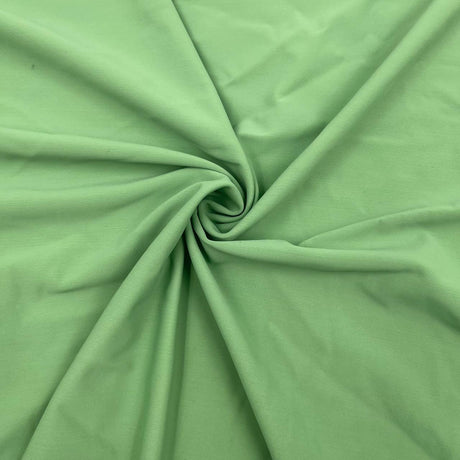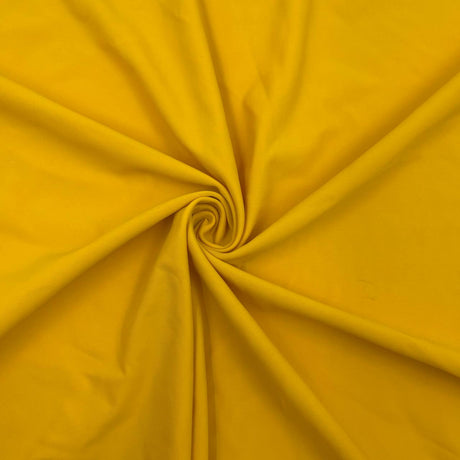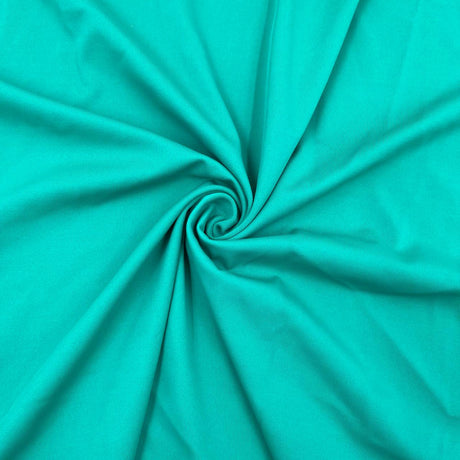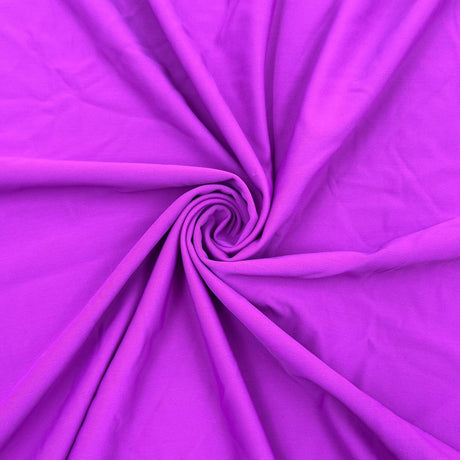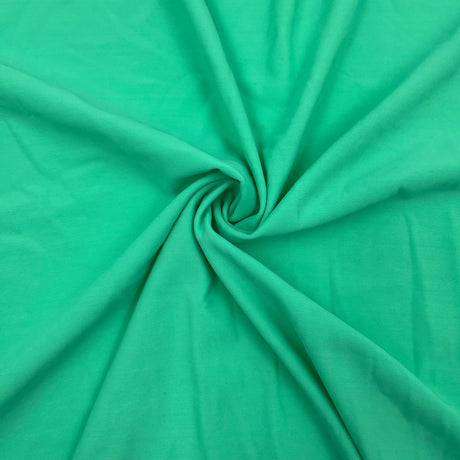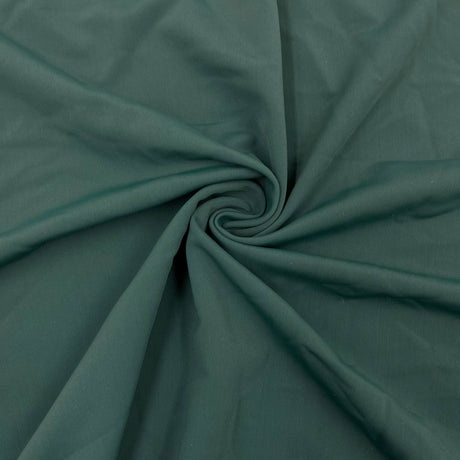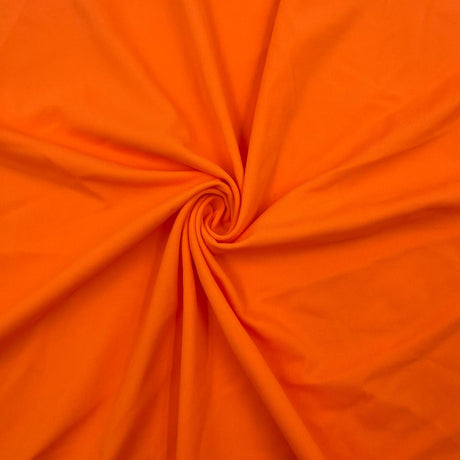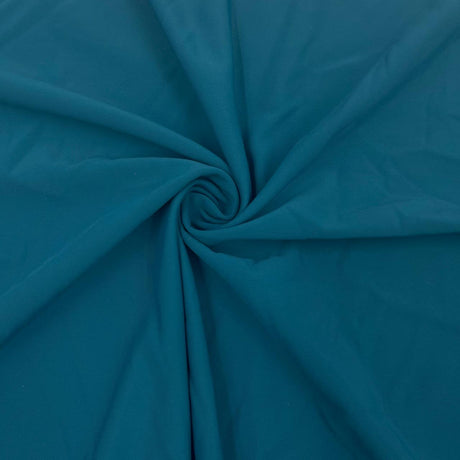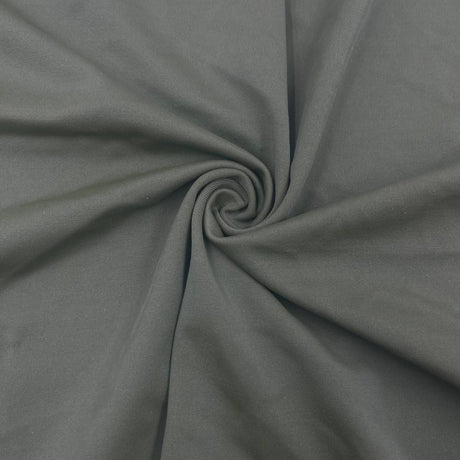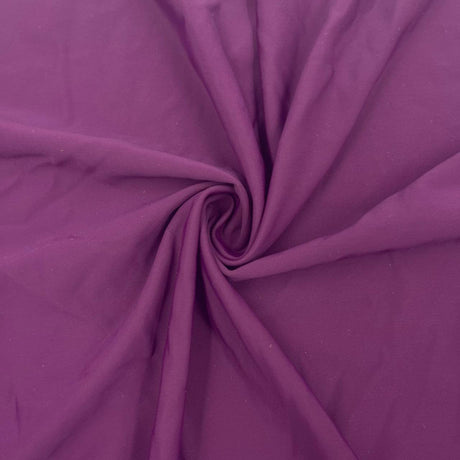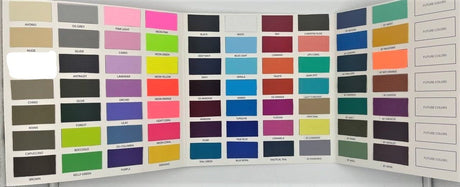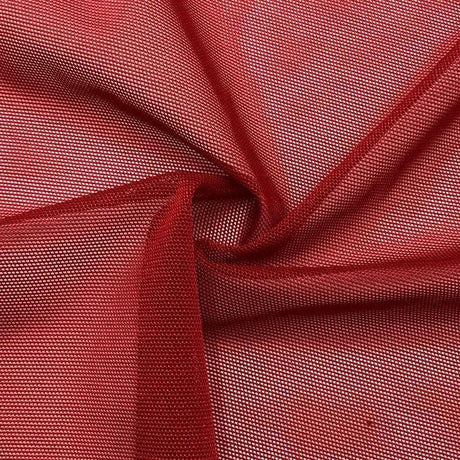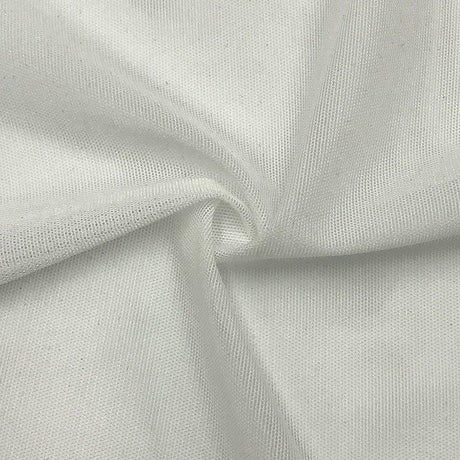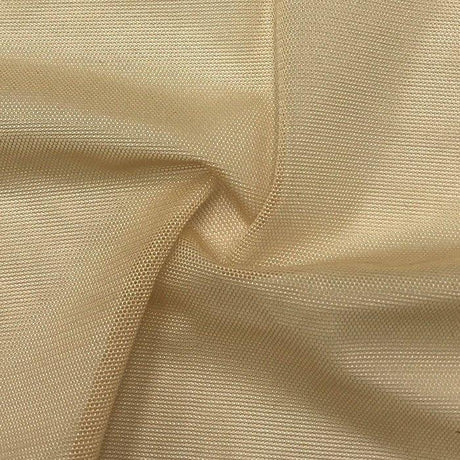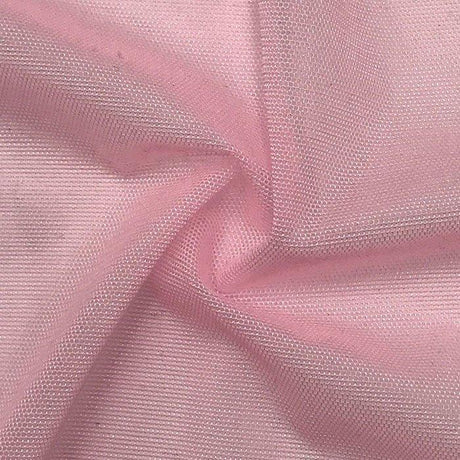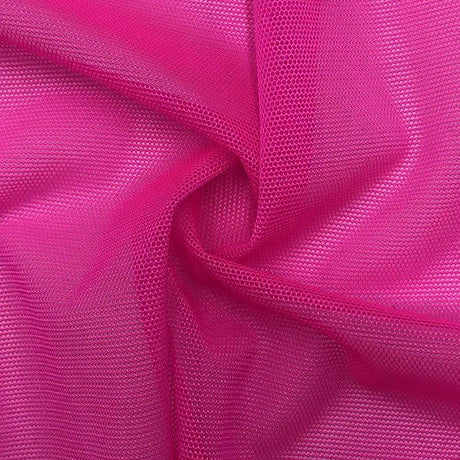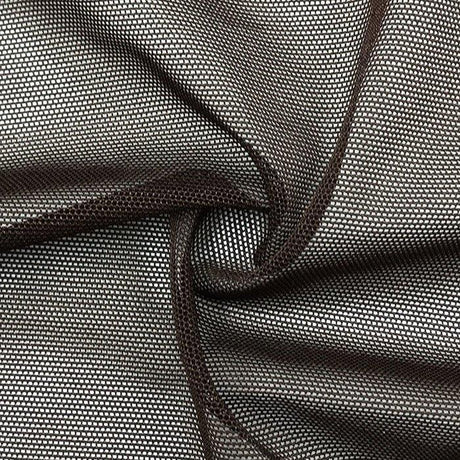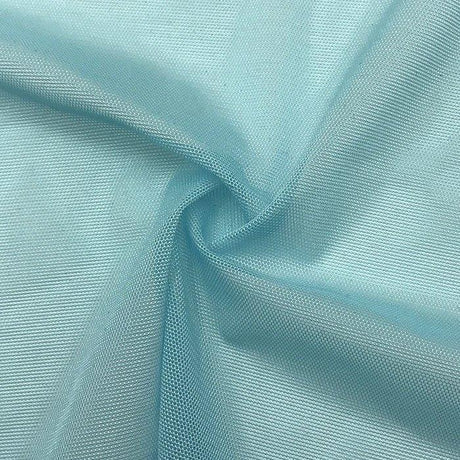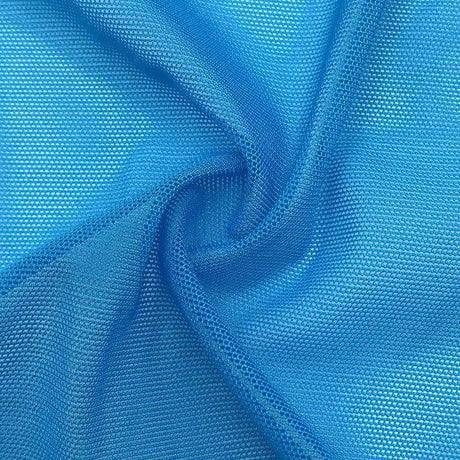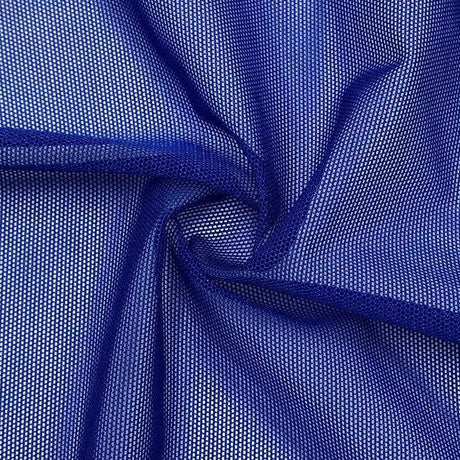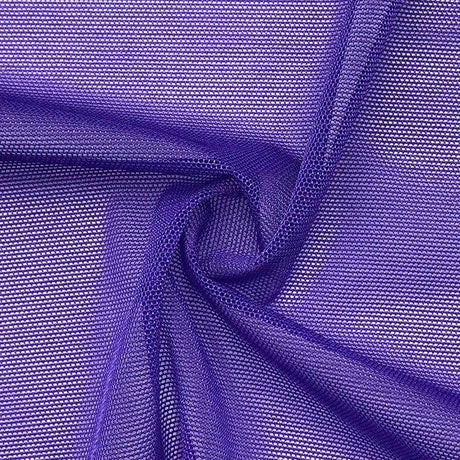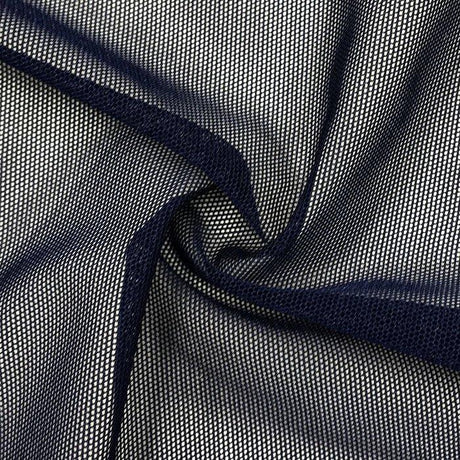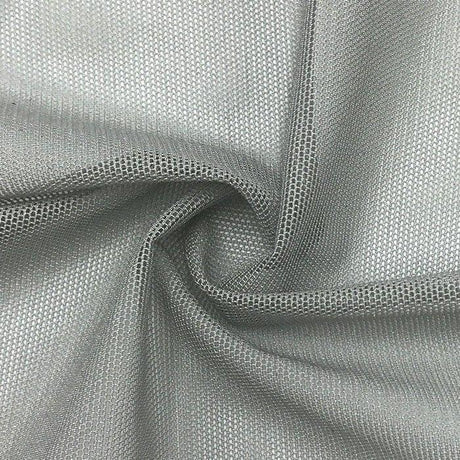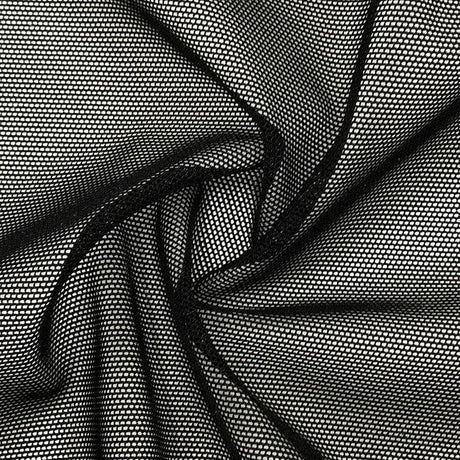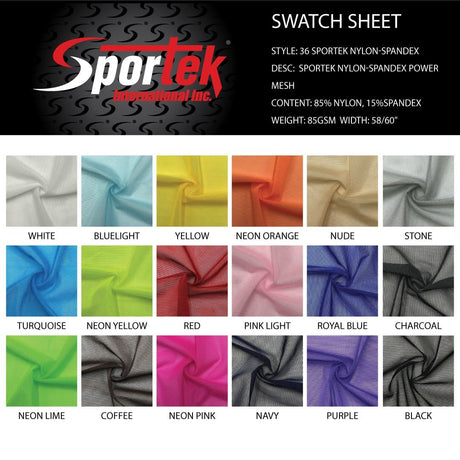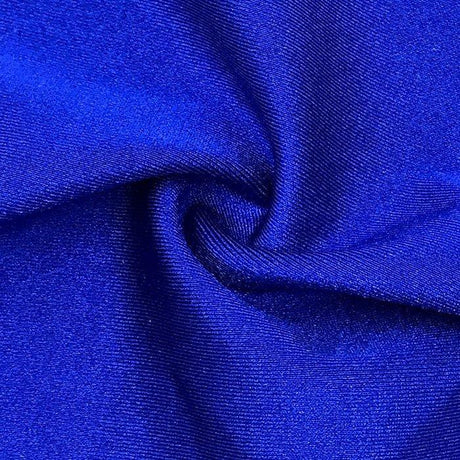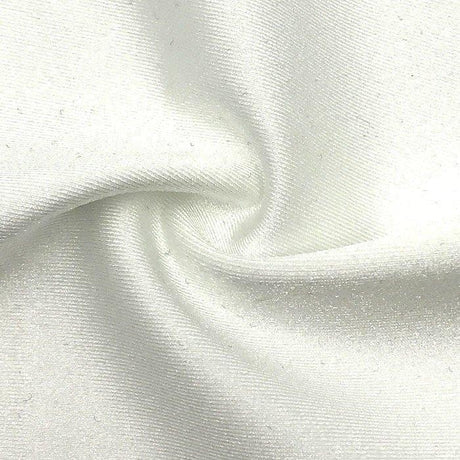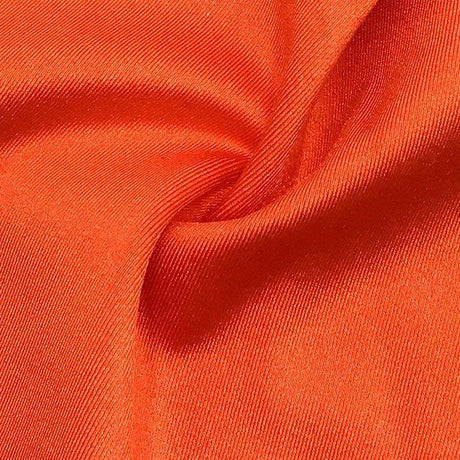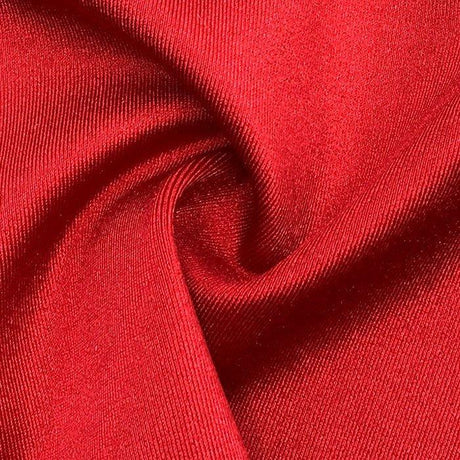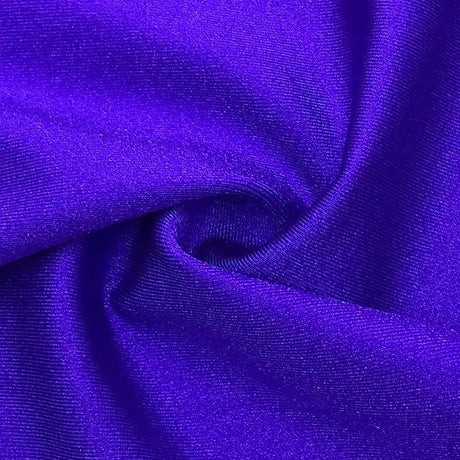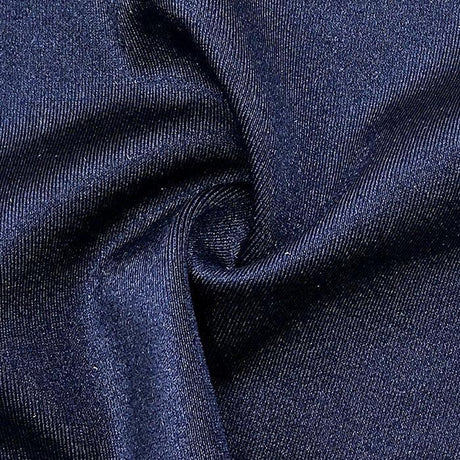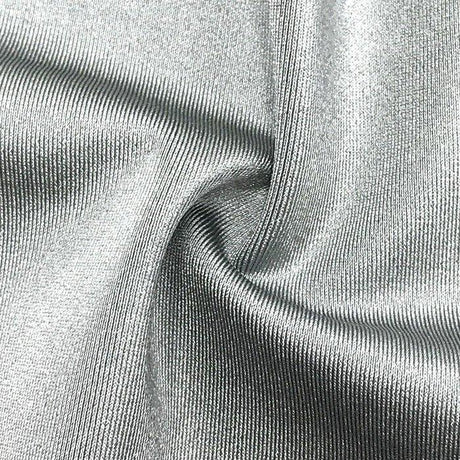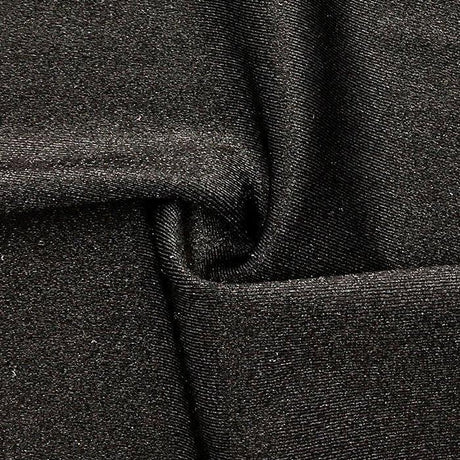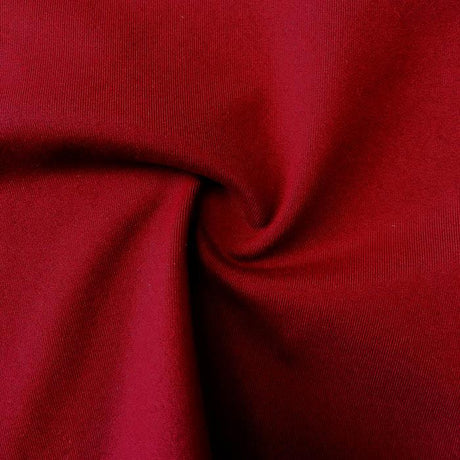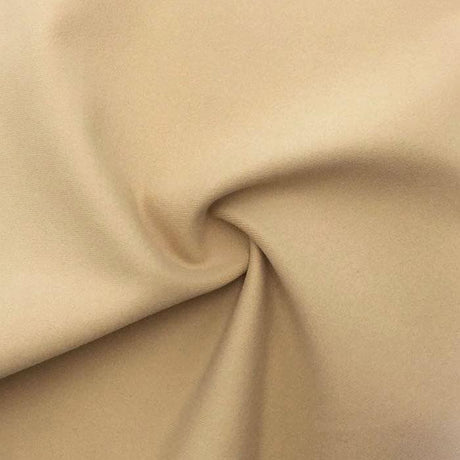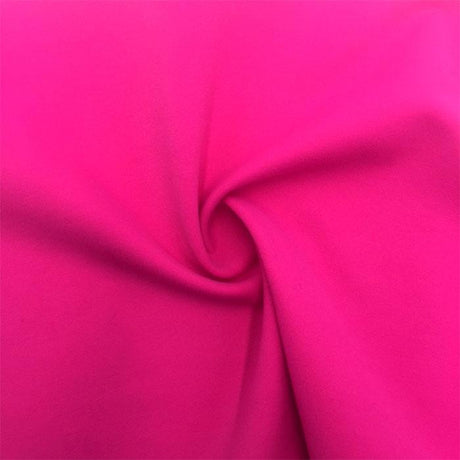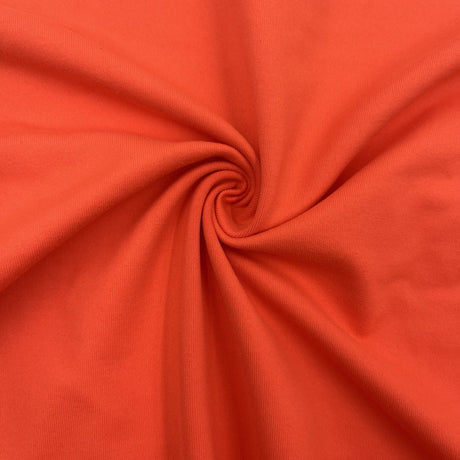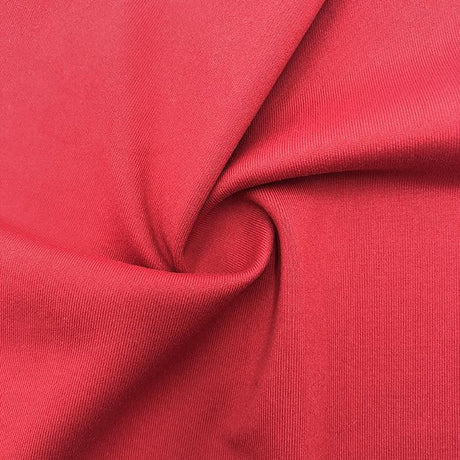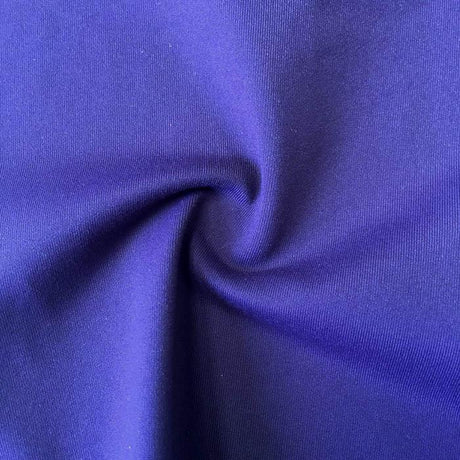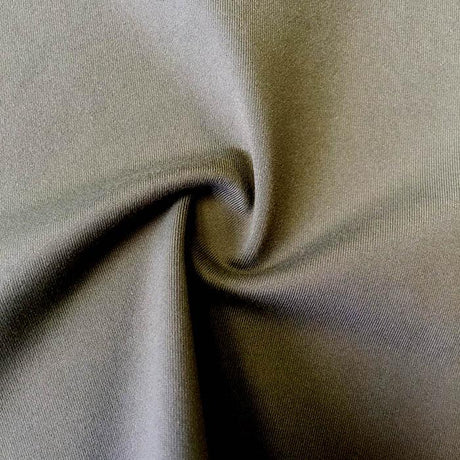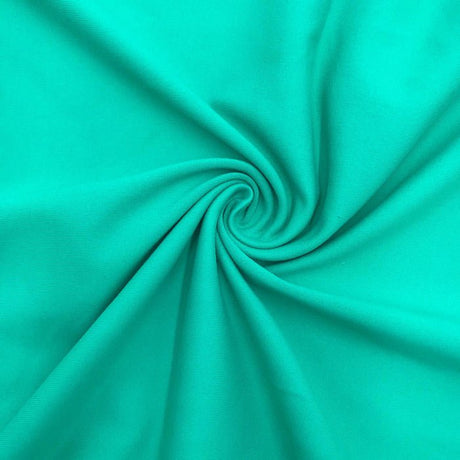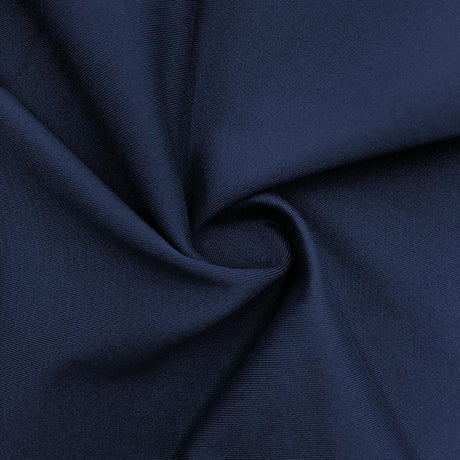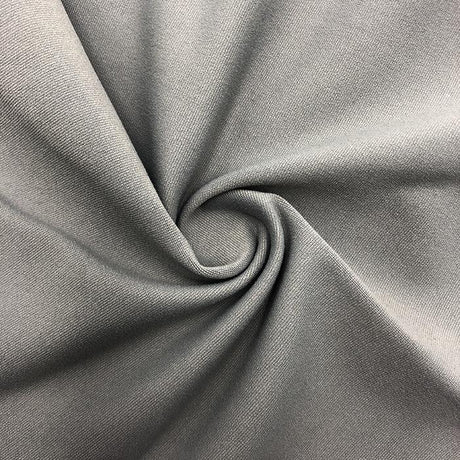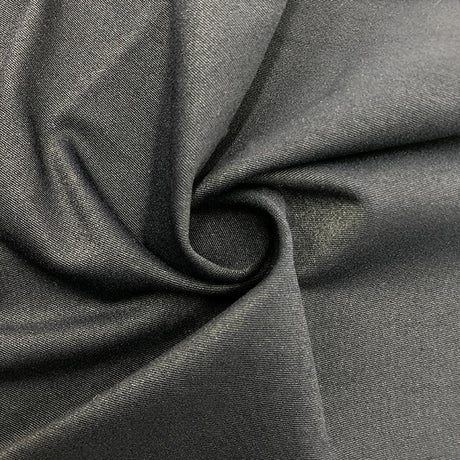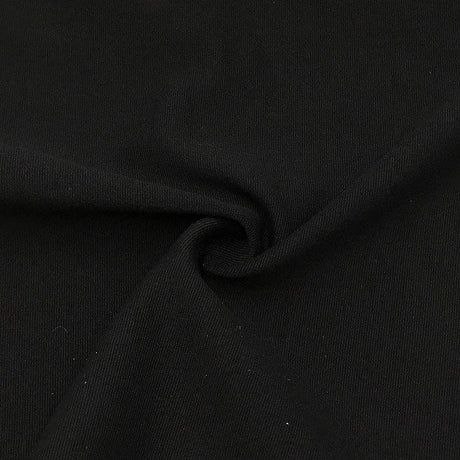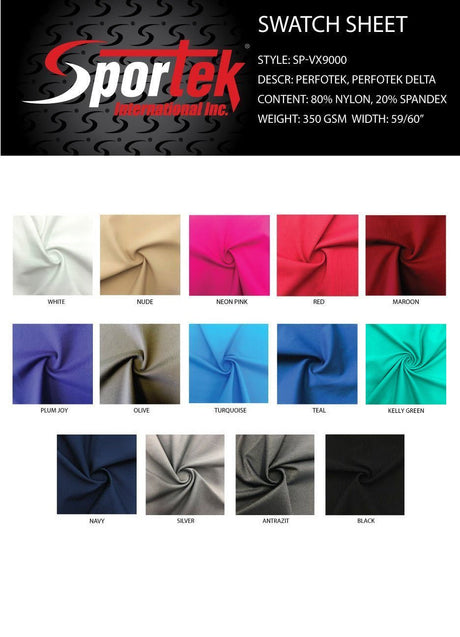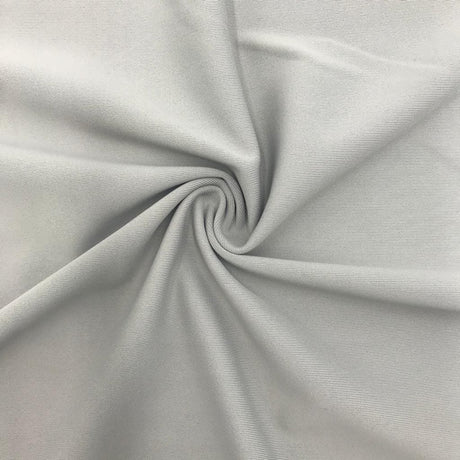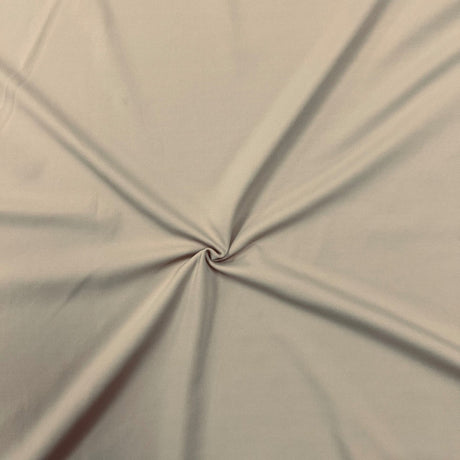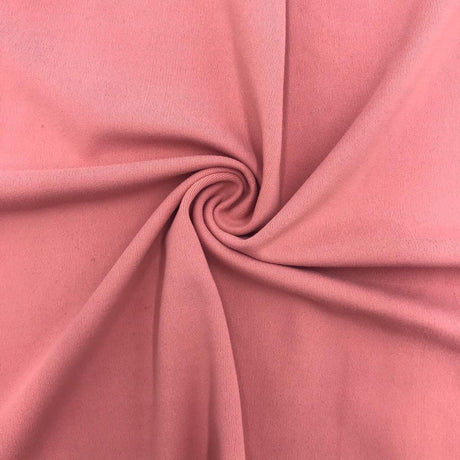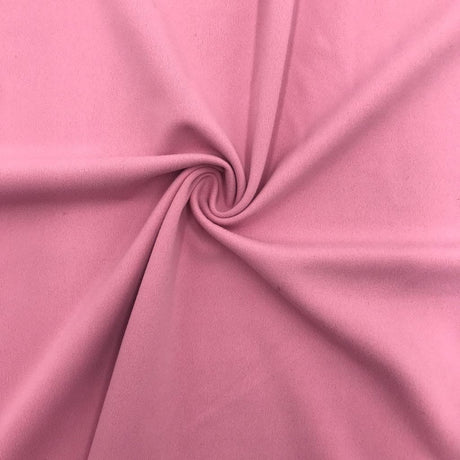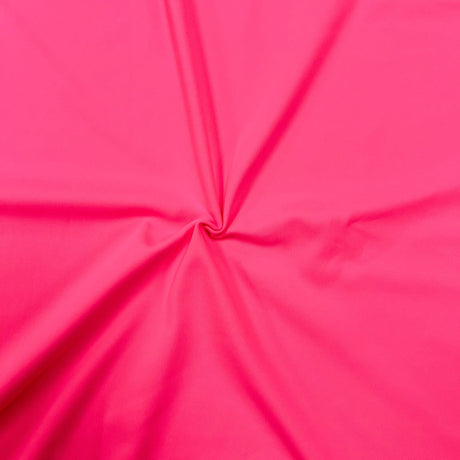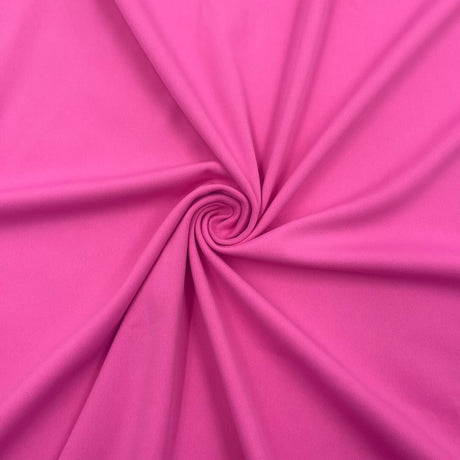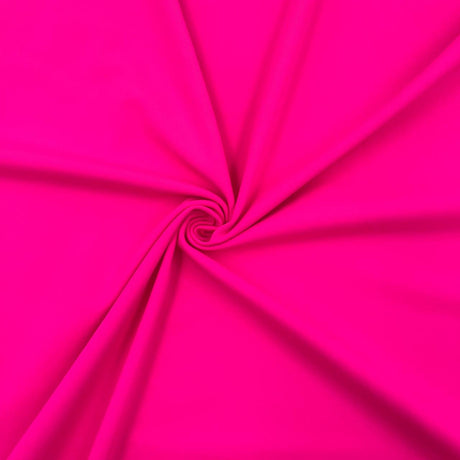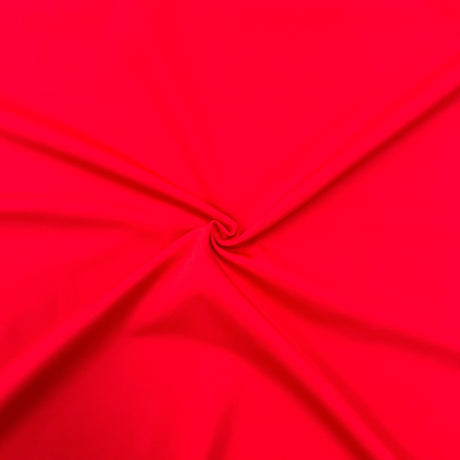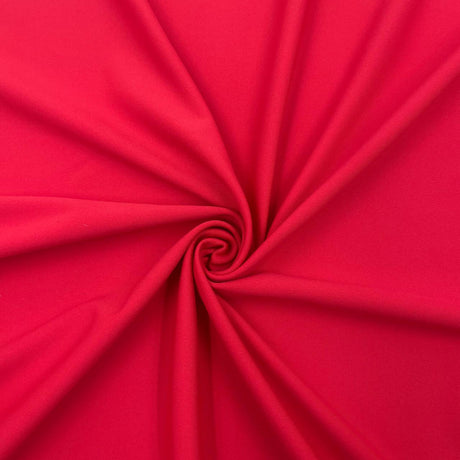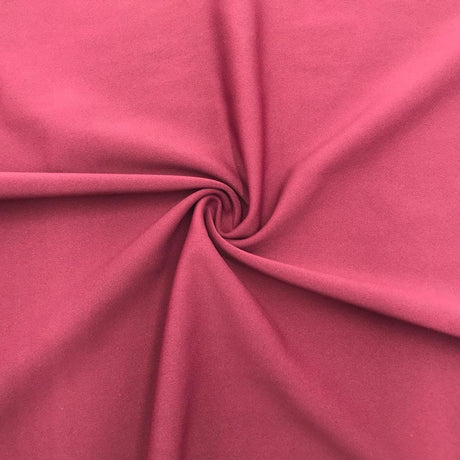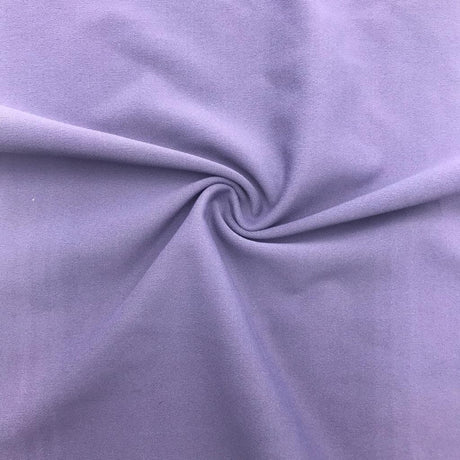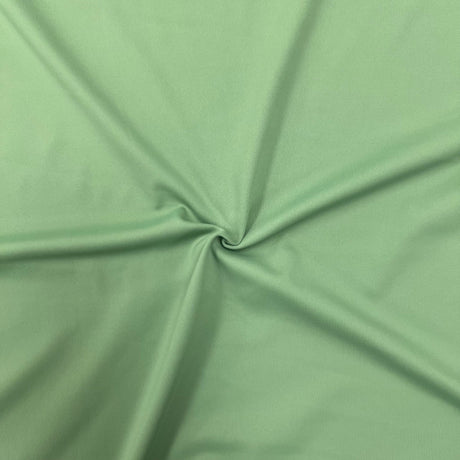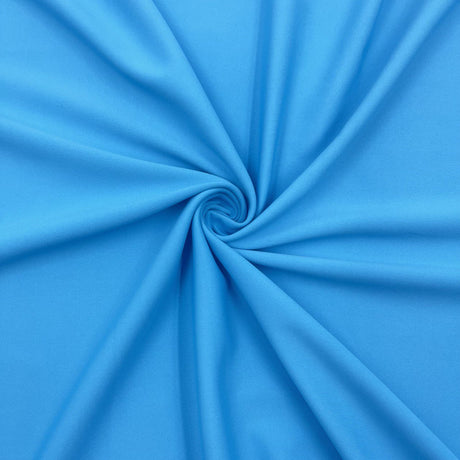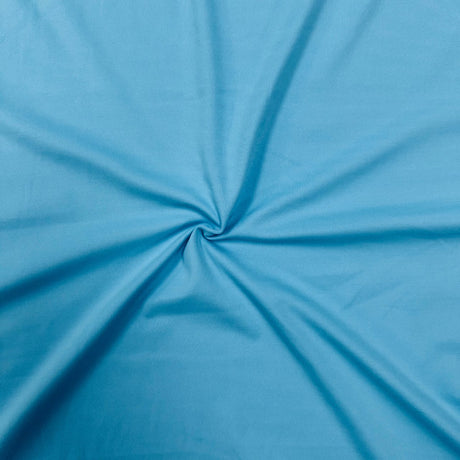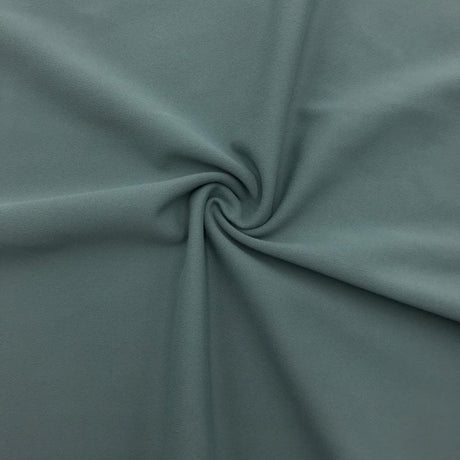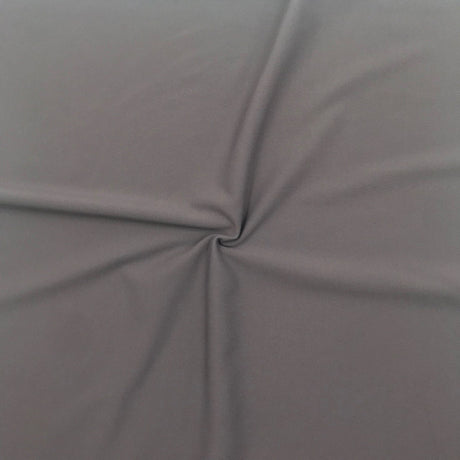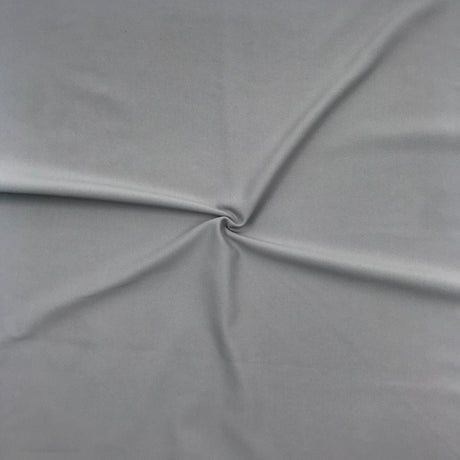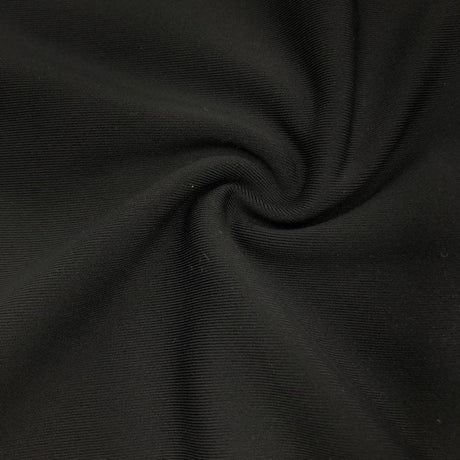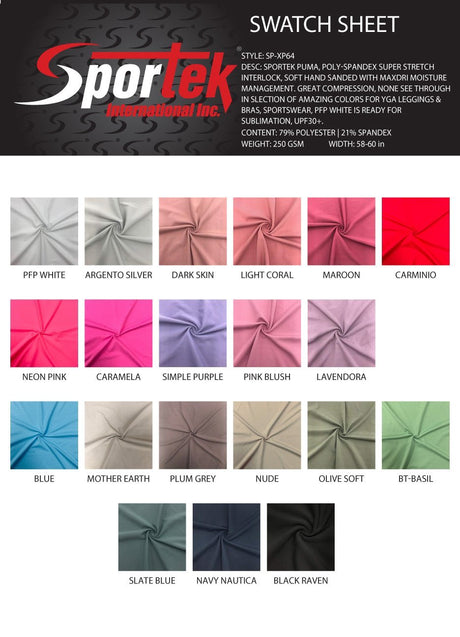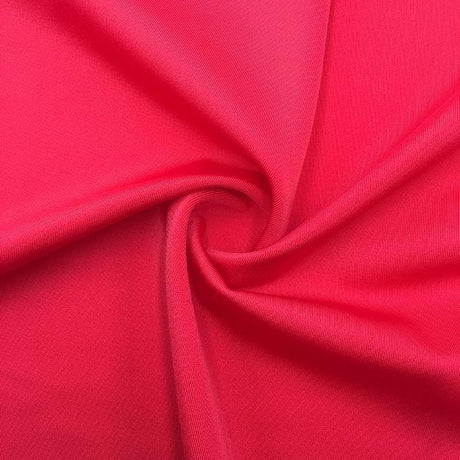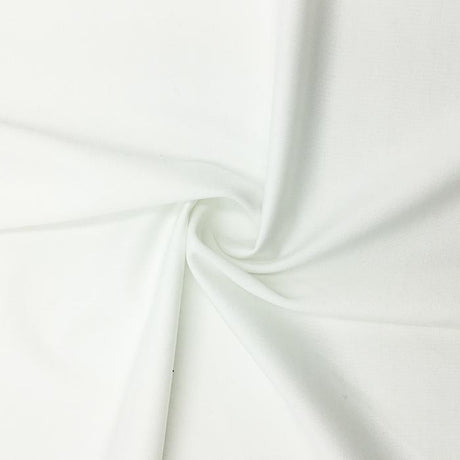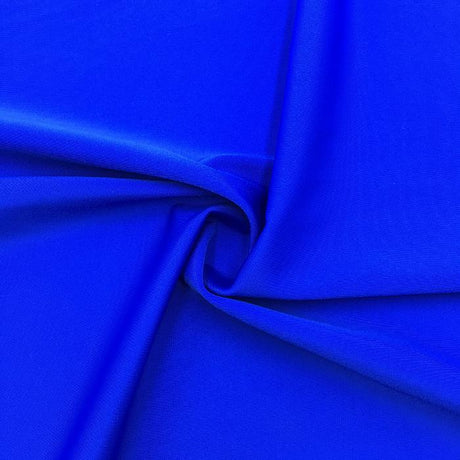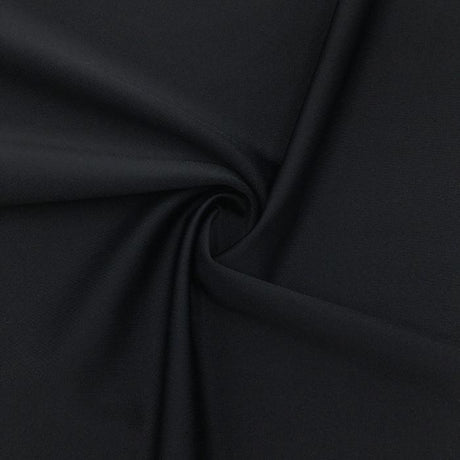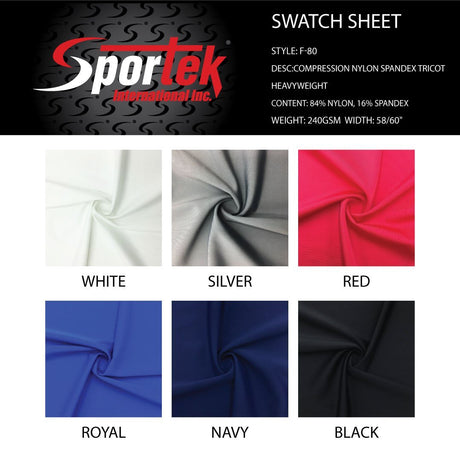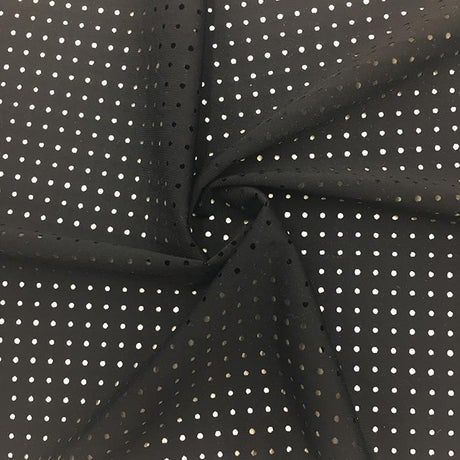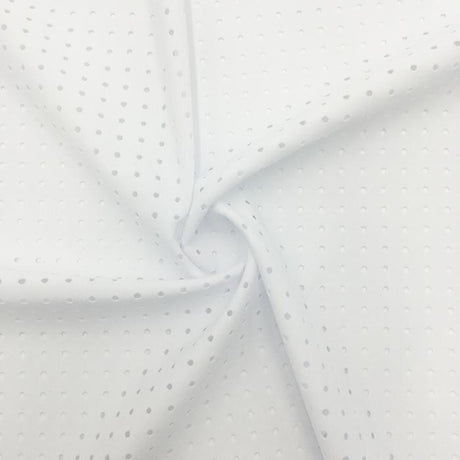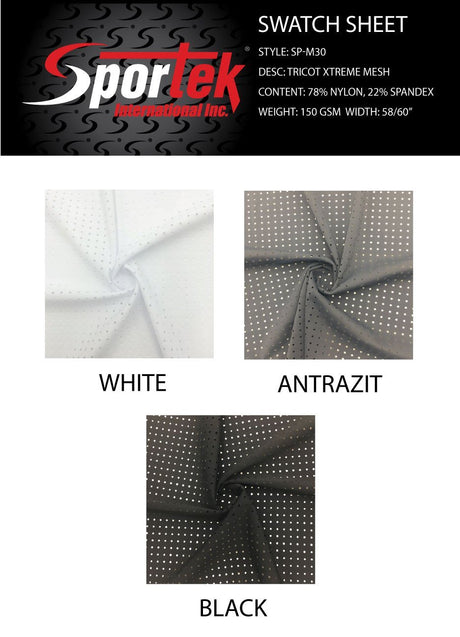Selecting the right cosplay spandex fabric can make or break the look and comfort of your costume. Spandex (also known as Lycra or elastane) is a go-to material for many cosplayers – especially for superheroes, video game characters, and any design that requires a form-fitting, flexible outfit. In this article, we’ll explain why spandex is so popular in cosplay, explore the different types of spandex fabrics (matte, shiny, metallic, holographic, printed, mesh, etc.), discuss 2-way vs. 4-way stretch, and share tips on sewing and buying spandex by the yard. With the right knowledge, you can choose the perfect spandex that brings your character to life while ensuring comfort and durability.
Why Spandex is a Cosplay Favorite
Spandex has earned its place in cosplay for several key reasons:
- Stretch and Mobility: Spandex is extremely stretchy and elastic, which means it moves with your body. Cosplay costumes often have body-hugging designs that need to maintain their shape but still allow free movement. A quality stretch fabric lets you pose, dance, or fight imaginary villains without tearing a seam. In fact, stretch fabrics help costumes stay true to their intended shape without restricting mobility, so you can wear them through long conventions or performances comfortably.
- Second-Skin Fit and Aesthetics: This fabric has a knack for creating a “second skin” effect. Spandex molds to your body like a bodysuit, which is perfect for superheroes and other characters with skintight outfits. It gives that sleek, form-fitting look that makes your cosplay appear more authentic to characters who wear catsuits, zentai suits, or other tight gear. The material also comes in many finishes – from matte to high-gloss – allowing you to achieve the exact look your character demands (be it a subtle matte finish or a shining armored appearance).
- Comfort and Wearability: Despite being form-fitting, spandex is generally comfortable because it’s lightweight and moves with you. A well-made spandex outfit will stretch as you run, jump, sit, or dance, which is a big plus for cosplay contests and long convention days. The fabric’s elasticity also means it can fit a range of body shapes snugly, and it “recovers” its shape after stretching. Additionally, blends like nylon-spandex are known for strength and flexibility, offering a good balance of durability and comfort in cosplay wear.
- Visual Versatility: Spandex fabrics come in virtually any color and a variety of textures or sheens. This versatility is a huge boon to cosplayers. Whether you need the bold glossy shine of a comic-book superhero or the muted look of a stealth suit, there’s likely a spandex for that. The material can also be layered or tailored to match complex designs. In short, spandex helps achieve visual accuracy for characters while still being practical to wear.
Types of Spandex Fabrics for Cosplay
Not all spandex is the same. “Spandex” really refers to any fabric with a high elastane content, but it comes in many varieties and finishes. Here are some of the most popular types of spandex fabric you might consider for cosplay costumes:
Matte vs. Shiny Spandex
One of the first decisions is whether you want a matte or shiny finish on your costume. Both have distinct looks and advantages:
- Matte Spandex: Matte spandex has a non-reflective, smooth finish. It doesn’t shine under light, which gives it a more understated, natural look. Many cosplayers choose matte spandex for a clean, timeless aesthetic that photographs well without glare. Matte fabric is also very flattering, as it diffuses light – smoothing out lumps or bumps – and tends to hide imperfections in the body or the garment. It’s popular for everyday activewear and cosplay alike when you want a serious or realistic vibe rather than a flashy shine. Another practical benefit is that matte spandex is often engineered for breathability and moisture-wicking, especially athletic or tricot versions, so it can be more comfortable in warm conditions.
- Shiny Spandex (Wet-Look): Shiny spandex is sometimes called “wet look” or “liquid” spandex, and it definitely makes a statement. This fabric has a glossy, reflective surface that catches the eye immediately. A shiny spandex bodysuit can look dynamic and futuristic, almost like it’s wet or metallic, which is fantastic for costumes that need a bit of glam or sci-fi flair. Under stage lights or camera flash, shiny spandex will gleam, making it ideal for performance-oriented costumes or characters known for their bold outfits. Keep in mind that high-shine fabrics will highlight every curve and seam – sometimes even showing things like undergarment lines or body shape more than matte fabric would. Also, heavily coated “wet” spandex may be slightly less breathable, so consider ventilation if you’ll be wearing it for long periods.
If you can’t decide, think about your character and practical needs. Matte spandex offers a subtle, professional look and tends to be forgiving to wear, whereas shiny spandex offers maximum visual impact and is great for flamboyant or theatrical looks. You can even mix them – for example, use matte spandex for the main suit and add shiny spandex accents or panels to make certain parts pop. The weight of the fabric also plays a role in the look: a heavy-weight matte spandex gives a structured, substantial look, while a lightweight shiny spandex drapes more fluidly and delicately, almost like liquid on the body.
Examples of metallic and holographic spandex fabrics in various colors. Shiny “wet-look” spandex gives a bold, reflective sheen, while matte types (not shown) provide a subtler finish.
Metallic and Holographic Spandex
For truly head-turning costumes, metallic and holographic spandex are fantastic options:
- Metallic Spandex: Metallic spandex refers to any spandex fabric that has a shimmering, reflective metallic finish. This is usually achieved by blending in metallic fibers or applying a special foil coating to the surface. The result is a fabric that stretches like normal spandex but shines like metal. Metallic spandex comes in many colors – gold, silver, copper, red, you name it – often with a mirror-like or glossy foil look. It’s perfect for costumes that need a bit of armor-like glint or magical sparkle. For example, cosplayers use metallic spandex for characters’ armor detailing, futuristic suits, or flashy dance outfits. A big benefit of quality metallic spandex is that it still retains good stretch and durability despite the coating. It tends to be quite eye-catching under lights, emphasizing every motion with a shine. (As a tip, avoid ironing metallic spandex, as high heat can damage the foil coating – always check care instructions.)
- Holographic Spandex: Holographic spandex is like metallic spandex taken to the next level. It features an iridescent, color-shifting sheen on the fabric – meaning as you move or the light changes, the fabric reflects different colors, producing a rainbow or “oil slick” effect. This multi-dimensional sparkle is incredibly striking and looks almost otherworldly. It’s a go-to for cosplays that need a futuristic or magical touch. Think of mermaid tails with shifting scales, a space hero’s outfit that shimmers in rainbow hues, or a pop star costume with extra bling. Holographic spandex can have patterns too (like holographic glitters, dots, or geometric prints embedded in the finish). It’s slightly less traditional than plain metallic; you’d choose it when you really want to grab attention instantly. Just like metallic spandex, holographic versions are also stretchy and come in 4-way stretch, but the surface might be a bit plastic-like to the touch due to the special coating.
Both metallic and holographic spandex are available from specialty fabric retailers in many finishes. They are generally ideal for bold costumes or stage wear. Do note that because of their reflective coatings, these fabrics may not be as breathable as plain spandex, so plan your costume’s lining or ventilation accordingly (for example, you might line a metallic bodysuit with a thin cotton layer, or just take breaks to cool off). On the plus side, they’re usually opaque and photograph brilliantly under direct light.
Printed Spandex Fabrics
Spandex doesn’t just come in solid colors or foils – you can also get printed spandex in endless designs. These are typically 4-way stretch fabrics printed with patterns or images using methods like dye sublimation or digital printing. Printed spandex can be extremely useful for cosplay because it allows you to achieve complex designs without hand-painting or applique. For example, you might find spandex printed with galaxy nebula patterns, animal prints, camouflage, florals, or even character-specific motifs. Some cosplayers even design custom prints (for instance, a Spider-Man suit pattern) and have them printed onto spandex yardage.
Printed spandex is popular for fun designs – one cosplayer notes the abundance of “galaxy and mermaid prints” on spandex that can add a lot of personality to a costume. If your character has a unique texture or pattern on their outfit (say, scales, stars, or logos), a printed spandex might save you a ton of time, since the work is in the fabric itself. Holographic prints (like a snakeskin pattern in holographic foil) and metallic prints (like stars or stripes in foil on spandex) also fall in this category, giving you both pattern and shine.
When choosing printed spandex, consider the scale of the print (will those big stars look too large on your sleeve?) and the base color (lighter base fabrics might require lining). Also, check the print method – dye-sublimated spandex tends to retain the fabric’s original softness and stretch because the ink is embedded in the fibers, whereas some cheap printed spandex might have a plastic-y ink layer that reduces stretch. Most reputable suppliers of cosplay spandex prints will specify that the fabric remains flexible.
Printed spandex often pairs well with solid spandex – for instance, you could use a printed spandex for leggings and a matching solid color spandex for the top or accents, tying the costume together.
“Wet Look” Spandex
Wet look spandex deserves a special mention. We touched on it under shiny spandex, but to clarify: wet look spandex is a type of highly shiny spandex that imitates the look of wet latex or leather. It’s usually a black or vividly colored spandex with a high-gloss sheen. Cosplayers love wet-look spandex for outfits like catsuits, slick superhero uniforms, or villain costumes where a leather or latex appearance is desired but you still need the comfort and stretch of fabric. It’s essentially the closest thing to latex in appearance, yet far easier to sew and wear (real latex is not a breathable fabric at all and has no stretch unless molded thin – plus requires special glue to assemble).
Wet look spandex fabrics are typically 4-way stretch and can range from slightly shiny to mirror shine. A good wet-look fabric will have that “liquid” shimmer without cracking when stretched. As noted earlier, shiny “liquid” spandex creates a very glamorous, futuristic aesthetic on stage. It highlights body lines, so it’s great for showing off muscle shading or a sleek silhouette. One thing to consider is that the coating that gives it the wet shine can trap heat – breathability is lower compared to matte fabrics. In practice, this means if you wear a full-body wet look suit, it might get sweaty; look for versions advertised as dance or swim spandex, since those might have some moisture-wicking treatment. Also, be gentle when sewing – avoid puncturing it too much with pins (use fabric clips or pin in seam allowances) to prevent creating visible holes in the coating.
Sheer Mesh and Power Mesh
Spandex isn’t only thick, opaque material; it also comes in mesh form. Stretch meshes are fantastic for cosplay when you need translucent or breathable sections in a costume.
- Sheer Stretch Mesh: This is a lightweight, see-through spandex mesh that usually has 4-way stretch. Sheer mesh (often just called stretch mesh or power net, though “power net” is technically the more supportive version) is used for illusion panels, sleeves, or yokes – anywhere you want a bit of transparency or a lighter look while still having stretch. Many cosplay designs use nude-colored stretch mesh to create the illusion of “cut-outs” or to hold difficult shapes (for example, a deep plunge neckline might actually be filled in with nude mesh to keep it in place). You can also use mesh for areas that need extra ventilation (like behind knees or under arms for a bodysuit) because mesh breathes more than solid spandex. Sheer mesh comes in various colors (including skin tones and fun colors) and typically is very lightweight. Keep in mind it can be quite see-through; if you need just a bit of translucency, you might layer two meshes or choose a power mesh.
- Power Mesh (Power Net): Power mesh is a stronger, tighter-knit mesh made of spandex (elastane) and nylon or polyester. It has a similar appearance (micro net texture) but is designed to provide support and stability. Power mesh is often used as a lining in sportswear, swimwear, and costumes – for example, inside a dance costume to provide tummy control, or as the base for sewing sequins and appliqués on a stretchy costume. In cosplay, you might use power mesh to line a bodysuit that needs a bit of compression or to reinforce areas like knees or elbows without losing stretch. It’s also great for semi-transparent costume pieces that still require some strength (like a mesh that holds up a cape or armor pieces). As one description notes, power mesh works well “for liners of clothing, inside lingerie, and as a decorative layer,” and it’s prized for being durable, with lasting stretch and recovery. Despite being stronger, it is usually still sheer. Power mesh tends to have a higher spandex content (sometimes 15-20%), making it very elastic but also resilient.
Both types of mesh can be found in the dancewear or cosplay fabric sections of stores. When sewing with mesh, remember it’s prone to snagging – use fresh fine needles. Also, edges of mesh won’t fray (it’s basically little knit loops), but they can curl or roll, so some people like to fold-over hem or bind the edges for a neat finish if exposed. Mesh fabrics allow you to get creative by layering them over other spandex too; for instance, putting a patterned mesh over a contrasting color spandex can create a cool layered effect.
Understanding 2-Way vs. 4-Way Stretch
When shopping for spandex fabric, you’ll often see it labeled as 2-way stretch or 4-way stretch. This is crucial for cosplay because it affects how the fabric will behave on the body and whether it’s suitable for your pattern.
- 2-Way Stretch: A bit confusingly, “2-way” stretch usually means the fabric stretches in one direction (either horizontally or vertically). The term comes from older usage where lengthwise was one way and widthwise was another, but nowadays most say 2-way for single-direction stretch. Essentially, a 2-way stretch spandex might only stretch across the grain (from selvedge to selvedge) but has little to no stretch in the perpendicular direction. Some vinyl-coated spandex or certain dancewear fabrics are like this – they have great stretch around the body but none up-and-down. If you have a 2-way stretch fabric, you must align the stretch in the direction you need (typically around the body’s width, not height).
- 4-Way Stretch: Four-way stretch means the fabric stretches in both directions – horizontally and vertically (and of course diagonally as well). Most true spandex fabrics are 4-way stretch, including those used for swimwear or activewear. A 4-way stretch material can accommodate movement and form in all directions, which is ideal for a bodysuit that needs to stretch both around your torso and lengthwise from shoulders to crotch.
Why does this matter? Because cosplay patterns often specify which type of stretch is required. If a sewing pattern calls for 4-way stretch and you use a 2-way stretch fabric, you’ll likely end up with a piece that won’t stretch enough in one dimension, making it hard or impossible to wear. As one expert notes, if a pattern is made for 4-way, you can’t substitute 2-way without altering the pattern (it simply won’t fit right). On the other hand, if a pattern only needs 2-way stretch (say just around the body), you can still use a 4-way stretch fabric with no issue – the extra stretch won’t hurt, it’s just overkill.
Which to use for what? Generally, 4-way stretch is more forgiving and preferred for form-fitting costumes like catsuits, leggings, gloves, or anything skin-tight. It allows the fabric to adjust in both circumference and length, so it moves with you more naturally (for example, when you bend your knee, the fabric stretches lengthwise over it instead of pulling down). 2-way stretch fabrics can work for things like leggings, sleeves, or tube dresses where you only really need stretch around, not up-and-down – but you must ensure the pattern is cut accordingly. Some costume pieces that don’t cover the whole limb or torso (like a gauntlet that just needs to stretch around your forearm, or a strapless dress) might be fine in 2-way. In practice, many cosplayers stick to 4-way spandex because it’s readily available and versatile. If you do end up with a 2-way stretch material (perhaps a very specific color in a stretch vinyl), you might need to add zippers or openings to get in and out of the garment since it won’t stretch as much to accommodate pulling it on.
A quick test if you have a fabric swatch: try stretching it vertically and horizontally. If both give, it’s 4-way. If one is rigid, treat it as a 2-way. Remember to cut your pieces so the stretch goes where it’s needed (usually around the body). And always follow the pattern’s stretch requirements – this is one case where improvising can lead to a cosplay that doesn’t fit!
Key Considerations: Color, Thickness, Opacity, and More
Beyond type and stretch, there are some important quality and practicality considerations when choosing a spandex for your cosplay:
- Color Accuracy: Spandex fabrics come in a rainbow of colors, but getting the exact hue for your character can be tricky, especially when shopping online. Colors on your screen may differ from real life due to lighting or monitor settings. If you need a perfect color match (say, the exact shade of Superman’s blue or an exact skin tone), it’s wise to order a sample swatch before buying yards. This way you can see the true color and sheen in person. Also consider how the color looks under different lights – convention hall fluorescent lighting vs. outdoor sunlight can make the same fabric look different. When in doubt between two shades, ordering a little of each to compare can save you from disappointment. Additionally, note that some spandex (especially lighter colors or flesh tones) can be slightly translucent, showing the darker tones beneath; color accuracy isn’t just about hue but also about coverage. You might need to choose a slightly thicker or darker variant of a color to ensure it looks right and opaque when worn.
- Fabric Weight & Thickness: Spandex fabrics come in different weights, usually measured in ounces or GSM (grams per square meter). Heavier-weight spandex (like moleskin spandex) is thick, very opaque, and often has a firm stretch. Lighter-weight spandex (like milliskin tricot) is thinner, more drapey, and might be semi-opaque. The thickness can affect your cosplay in a few ways. A heavier spandex holds its shape more and can smooth out your silhouette (almost like mild shapewear), whereas a thin spandex will contour to every detail and might require lining. For example, one cosplayer notes that a heavy spandex like moleskin is thick enough to not need a lining, while a thinner milliskin might require lining to avoid transparency. Thicker fabrics can also hide things like seam allowances or undergarments better. On the flip side, heavy spandex can be warmer to wear. Think about the climate of your event – if you’ll be outdoors in summer, a thick spandex suit might be very hot; you could opt for a medium weight and double up only in critical areas. Opacity goes hand-in-hand with weight: hold a stretch fabric up to the light and stretch it – if you can see light or your hand through it, it may go see-through under strain. Always consider how the fabric behaves when stretched over a body; lighter colors and lighter weights are more likely to show undergarments or patterns underneath. If you fall in love with a thin fabric, you can flatline (double-layer) it with another lightweight layer for coverage.
- Opacity and Lining: Nobody wants a wardrobe malfunction. With spandex, opacity is crucial – especially for light colors (white, yellow) or pastels, which can sometimes reveal undergarments or even patterns of body paint/tattoos if not opaque enough. To ensure modesty and accuracy, you might line your spandex garment or wear a base layer. For instance, white spandex leggings might need a second layer of white spandex or nude dance tights underneath so they’re not see-through. Some speciality spandex fabrics have a built-in lining (for example, foil spandex might have a beige backing that adds opacity). When buying, check reviews or descriptions for notes like “not see-through” or specific GSM. It’s noted in the community that many chain-store spandex fabrics tend to be “insanely sheer” and low quality, often requiring lining. Investing in a better-quality spandex can save you the trouble of multiple layers. If you do line, remember to use a stretchy lining (could be another layer of spandex or a nude power mesh) so you don’t lose functionality.
- Breathability: Spandex is a synthetic, usually a blend like nylon/spandex or polyester/spandex. This means it doesn’t “breathe” as well as cotton. However, modern spandex fabrics often are designed for sports, so they include moisture-wicking or quick-dry features. A nylon-spandex milliskin will feel cool and smooth, whereas a poly-spandex with foil might feel more plasticky and trap sweat. If you’re going to wear a full bodysuit for many hours, consider choosing a fabric marketed as athletic or breathable spandex. Matte spandex fabrics often advertise being more breathable (for example, matte tricot spandex is noted for moisture-wicking in activewear). In contrast, vinyl or wet-look finishes are less so. You can plan your costume with small ventilation tricks: hidden mesh panels in high-sweat areas, or choosing a lighter weight fabric for parts that will be under others. Taking breaks out of a heavy spandex outfit helps too. Ultimately, remember that a convention day can be long and sweaty; balancing accuracy with comfort might mean the difference between a costume you keep wearing and one you retire early.
- Layering and Mixing Fabrics: Cosplay often involves layering fabrics – perhaps you have a spandex bodysuit with armor or clothing on top, or you’re layering a decorative mesh or lace over spandex. When layering spandex, you need to keep stretch in mind. An important rule is to try to match the stretch of layered materials. If you put a non-stretch layer over a stretch bodysuit, you might negate the flexibility of the spandex. For example, layering a thick non-stretch leather corset over a spandex catsuit is fine for style, but if you stitch a non-stretch decorative ribbon directly onto a spandex area, that area won’t stretch anymore and could even cause ripples or popping seams. Instead, use elastic trims or appliqués that can stretch or only attach things at certain points so the spandex can still move. Another type of layering is using multiple layers of spandex to achieve a certain look (like a sheer colored mesh on top of a solid spandex to create a nuanced color or pattern). This can be very effective – just treat the two layers as one when sewing, and consider that it will make the outfit warmer and a bit thicker. Also, layering can refer to wearing multiple spandex pieces: e.g., a unitard under a dress for modesty or a two-tone design where one color is worn over another. Always test the combination to ensure you can still move freely. Pro tip: If you need to layer but maintain stretch, power mesh is your friend – it can serve as a base layer that other pieces mount on, keeping things flexible.
- Durability: Spandex is generally quite strong (the fibers are literally made to snap back), but the fabric can still snag or run if abused. Check the quality – a higher spandex percentage (say 15-20%) often indicates a more resilient fabric for tight fits. Some coated spandex (glitter, foil) can lose sparkles or foil with heavy wear, so be mindful if the cosplay involves a lot of friction (like crawling on the floor in a dance). If durability is a concern (for example, knees on a Sentai suit that you’ll kneel in a lot), think about reinforcing from the inside with a second layer or choosing a heavier weight. Fortunately, spandex won’t fray at cut edges, so the main worry is stretch-related stress or snagging. Take care of your spandex costumes by washing them gently (cold water, mild detergent, hang dry) to prolong their life and color.
Sewing and Handling Tips for Spandex
Sewing spandex can be intimidating for beginners, but with the right techniques it’s very doable even on a standard home sewing machine. Here are some essential tips for cutting and sewing cosplay spandex:
- Use the Right Needle: Always sew spandex with a stretch needle or ballpoint needle on your sewing machine. These needles have a slightly rounded tip that slides between the fibers of knit/stretch fabrics rather than piercing them. If you use a regular sharp needle on spandex, you might get skipped stitches or even small holes (since a sharp needle can cut the elastic fibers). Many reports of “my machine won’t sew this fabric” come down to using the wrong needle. Stretch needles come in various sizes; a size 75/11 or 90/14 stretch needle is a good choice for most spandex weights. Change the needle if you finish a big project, as they dull faster on synthetic fabric.
- Choose Stretch-Friendly Stitches: A straight stitch will break on spandex seams – it doesn’t stretch, so the first time you pull the fabric, pop! Instead, use a zigzag stitch or another stretch stitch setting on your machine. A narrow zigzag (for example, width 2.5 mm, length 2.5 mm) works well for standard seams, allowing the seam to stretch. Many modern machines also have a “lightning bolt” stretch stitch or others designed for knits – these are fine too, though slower to sew. If you have a serger (overlock machine), a 3- or 4-thread overlock stitch is perfect for seaming spandex; it sews and finishes the seam in one step and naturally stretches. But a serger is not required – zigzag on a regular machine is perfectly acceptable (even professional dance costumes often use zigzag). For topstitching or decorative stitching on spandex, also use a zigzag or twin-needle stitch, so that the topstitch can stretch with the fabric.
- Cutting Fabric – Prevent Slippage: Spandex can be slippery or stretchy when cutting. To avoid distortion, cut in a single layer (if possible) on a flat surface. Many cosplayers swear by using a rotary cutter and cutting mat with pattern weights instead of scissors. The rotary cutter lets you slice through without lifting the fabric, so the fabric doesn’t stretch out of shape as you cut. If you use scissors, take care not to drag the fabric. Laying tissue paper underneath can help stabilize it while cutting (you can just cut the paper along with the fabric). Pattern weights (or makeshift ones like cans of soup or washers) are better than pins for spandex, because pinning can cause the fabric to recoil or bunch. If you must pin, do so within seam allowances to avoid permanent holes or runs, and insert pins perpendicular to the cut to minimize distortion.
- Handling & Sewing Techniques: When sewing, do not stretch the fabric excessively under the presser foot. Let the machine feed it naturally, or you’ll end up with wavy, lettuce-edged seams. If your machine has adjustable presser foot pressure, loosening it can help the spandex feed without getting stuck. A walking foot attachment can also assist by feeding the top and bottom evenly. Always sew some tests on scraps of your spandex to dial in the tension and stitch length before sewing your actual pieces – each spandex (especially those with different coatings) can behave differently. For very slippery spandex or very thin mesh, you can place tissue paper on top and bottom and sew through it, then tear it away after – this can prevent the fabric from getting jammed in the feed dogs.
- Finishing Seams and Edges: One nice thing about spandex: it doesn’t fray. The raw edges won’t unravel, thanks to the knit construction. That means you don’t have to finish interior seams if you don’t want to. However, raw cut edges can curl, especially in lighter knits, and it looks nicer to have a finish on visible areas. Common ways to finish hems (armholes, leg holes, bottom of a suit) include: a basic zigzag stitch near the edge, a twin-needle hem (which gives a professional double-stitch on top and zigzag on the back), or attaching a binding/band of the same fabric. For example, you can sew a strip of spandex like a bias tape to finish an opening – this actually can make it lie flatter and gives a clean edge. Twin needles are great for spandex hems on sleeves, necklines, etc., providing a bit of stretch and a ready-to-wear look. If you use a twin needle, be sure to slightly loosen the top tension so the bobbin thread zigzag has room to stretch. Another tip: use a bit of clear elastic or rubber elastic to reinforce areas that might stretch out, such as the shoulders of a bodysuit or a deep neckline. You can sew the elastic along the wrong side of the seam and it will keep that edge from bagging out over time. This is the same method used in swimwear.
- Pressing: Be careful with irons on spandex. Always use a low synthetic setting and a press cloth, or you could melt or glaze the fabric (especially anything with foil or holographic coatings – those can melt quickly!). Finger-press or use a mild heat just to flatten seams if needed. Often, just stretching the seam gently and topstitching it is enough to make it lay flat without ironing.
- Practice and Patience: If you’re new to sewing stretch fabrics, it’s worth practicing on some cheaper spandex scraps before cutting into your expensive cosplay fabric. Even try sewing two different scraps together to simulate insets or color blocking. Once you get the hang of how the fabric feeds and stretches, you’ll gain confidence. Remember, even if a stitch looks a little wobbly, many minor imperfections will not be noticeable when the costume is worn (because the fabric is stretched on the body).
By following these tips – using the correct needle, stitch, and handling – you’ll find that sewing spandex becomes much easier. In fact, you might start loving it because garments can be very forgiving (no fraying edges and lots of stretch means they can adjust to the body well).
Shopping for Cosplay Spandex Fabric Online
Buying spandex by the yard (especially online) offers you a huge selection of colors and finishes, but it’s important to shop wisely. Here are some tips for sourcing quality cosplay spandex fabric:
- Use Reputable Retailers: Not all fabric stores are equal. While big-box fabric stores might carry basic spandex, they often have limited selection and, as mentioned, sometimes lower quality for higher prices. For the best variety, check specialty shops (both brick-and-mortar dance fabric stores and online vendors). SpandexByYard.com, for example, specializes in stretch fabrics and offers a wide range of materials suitable for cosplay – from solid milliskins to metallic foils and power mesh. Specialty stores like this often have better quality control and more information on each product (like exact stretch percentage, fabric weight, and recommended uses) compared to generic listings on marketplaces. They might cost a bit more per yard than discount sellers on eBay or AliExpress, but you truly get what you pay for in terms of thickness and longevity. That said, there are bargains to be found; just make sure the source is trusted by the cosplay community or has good reviews.
- Read Product Descriptions Carefully: When browsing online, always read the full description. Look for details like fabric content (e.g. “80% Nylon, 20% Spandex” – nylon/spandex is generally softer and has a matte or semi-shine; “Polyester Spandex” might indicate a different texture or shine level). Check the stretch – some sites will specify 2-way or 4-way stretch, or even give a percentage (like “stretches 50% in width, 50% in length”). If it’s not explicitly stated, assume it’s 4-way if it’s dance/cosplay spandex, but for vinyl or sequined fabrics double-check. Weight or thickness might be given (for example, 200 gsm is a mid-weight, 300 gsm is heavy). Opacity clues might be in there too (if they recommend the fabric for swimsuits or leggings, it’s probably opaque; if it’s labeled for overlay or has “lightweight”, you might infer it’s semi-sheer). All these details will help you decide if a fabric meets your needs.
- Order Swatches: As mentioned under color, if you have time, order swatches especially when color matching or checking the texture. Many online shops offer swatch services for a small fee. This lets you feel the fabric’s stretch and thickness personally. You can also do tests like tugging it to see how much it rebounds, or holding it up to light. Swatches are also helpful to see the true color in normal lighting; product photos can be lit or edited. Investing a few dollars in swatches can save you from buying 5 yards of something unsuitable. And if you’re very particular about a color or finish, this step is practically essential.
- Check Width and Calculate Yardage: Most spandex fabric is wide (around 58-60 inches/150 cm). This is great because you can fit costume pieces efficiently. However, ensure you know the width – if for some reason a fabric is narrow (some specialty prints or laces might be 45 inches), you’d need more yardage. When buying stretch fabric, a rule of thumb is that you often need less yardage than a non-stretch project because patterns can be more form-fitting. But if your cosplay has a lot of pieces or you plan to pattern-match a print, allow extra. It’s usually safe to get an extra half-yard “just in case” – spandex can be tricky to find an exact match later if you run out, due to dye lot differences.
- Beware of “Dancewear” Quality vs “Costume” Quality: There are fabric listings, especially on massive marketplaces, that might be intended as once-off costume material (for something like Halloween) and not for durable wear. These could have issues like the foil coating flaking off after a few wears, or colors bleeding. On the other hand, materials marketed for dancewear, swimwear, or activewear are typically higher quality – meant to withstand movement, sweat, and multiple uses. Look for keywords like “active”, “swim”, “dance” in descriptions for a clue to durability. If a seller just calls it “costume spandex, great for one-time use”, that’s a hint that it might not hold up in the long run. For serious cosplays you’ll wear multiple times, invest in the better grade fabric.
- Compare Reviews or Community Recommendations: If you’re unsure about a specific fabric, sometimes you can find others’ experiences. Cosplay forums, Reddit, or Facebook groups might have threads discussing where to buy “good green spandex for Deku” or which sites have accurate color. A quick search can reveal if a particular shop’s “4-way stretch leather look spandex” was great or if it had issues. The cosplay community is generally happy to share fabric tips. Some well-known online stores for spandex include SpandexByYard (mentioned), Spandex World, Spandex House, Yaya Han’s fabric line (on CosplayFabrics.com), etc. Checking those could be a good start.
- Plan for Shipping Time: If ordering online, especially internationally, account for processing and shipping time. Some specialty fabrics might be shipped from abroad or have long handling times. Order well before your convention deadline to avoid panic. If you are in a rush, see if the shop offers expedited shipping.
- Don’t Forget Notions: Along with your spandex fabric, consider ordering matching thread (polyester thread works well; wooly nylon is great for serging seams), elastic (for any waistbands or stability), and perhaps lining material (power mesh or nude spandex) if needed. It’s convenient to get these from the same place if they carry them, ensuring color matches and appropriate stretch.
In summary, shopping for cosplay spandex fabric online is about knowing what you need and scrutinizing the specs. By leveraging trusted suppliers and paying attention to details, you’ll end up with a fabric that meets your cosplay needs – whether it’s the perfect shiny bodysuit material or a comfy stretchy knit for a casual costume piece. And remember, if you find a great fabric source, bookmark it! It can become your go-to for future projects, since cosplay often calls for spandex again and again.
By understanding these aspects – from the types of cosplay spandex fabric available to the technicalities of stretch and sewing – you’ll be well-equipped to pick the perfect material for your next costume. Spandex is a fantastic fabric that opens up a world of creative possibilities, allowing us to transform into superheroes, warriors, and fantastical creatures while still being able to breathe and move. With careful selection and a bit of practice, you can achieve that screen-accurate look and stay comfortable throughout the day. Happy cosplaying, and may your fabric hunts be ever in your favor!


